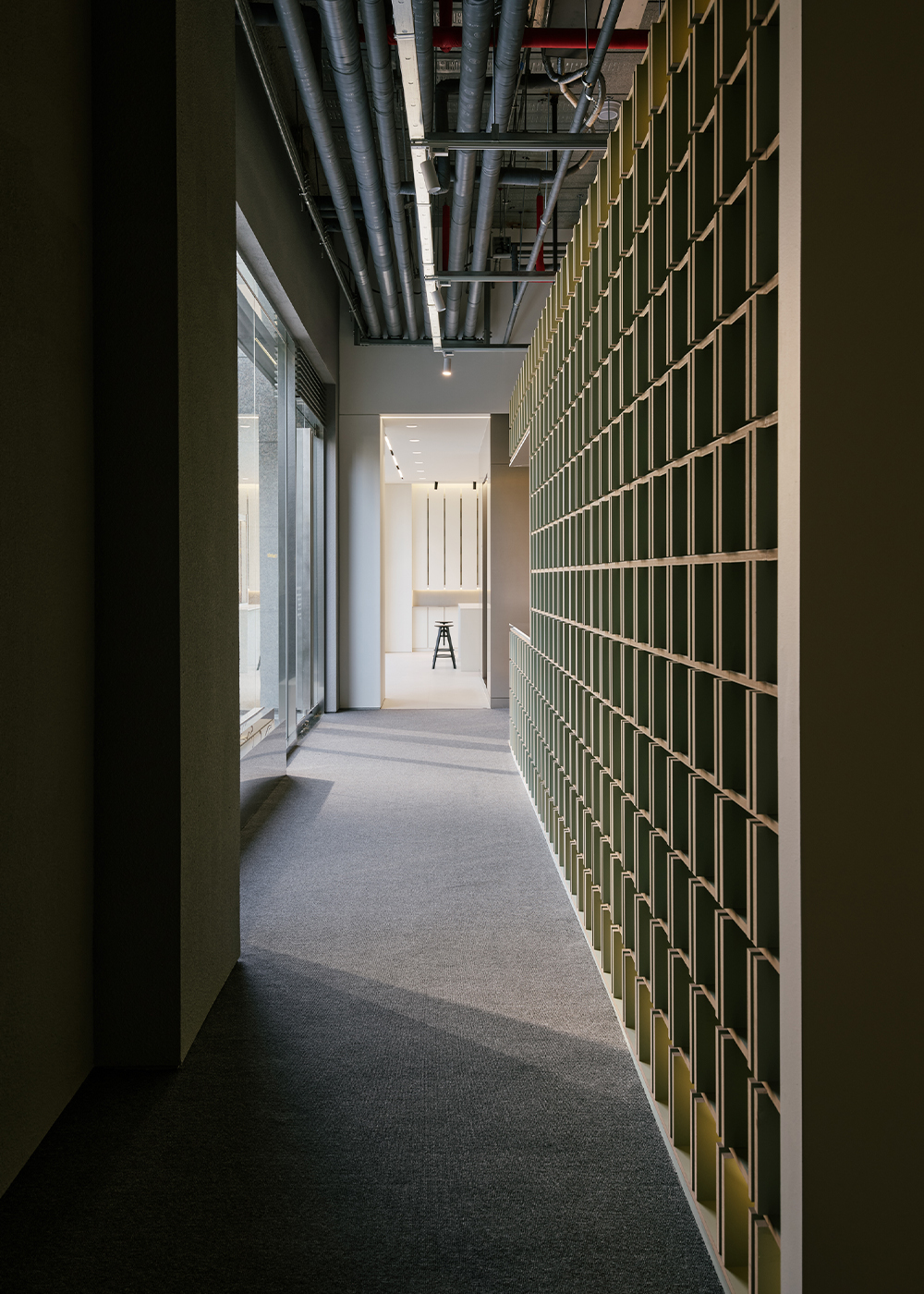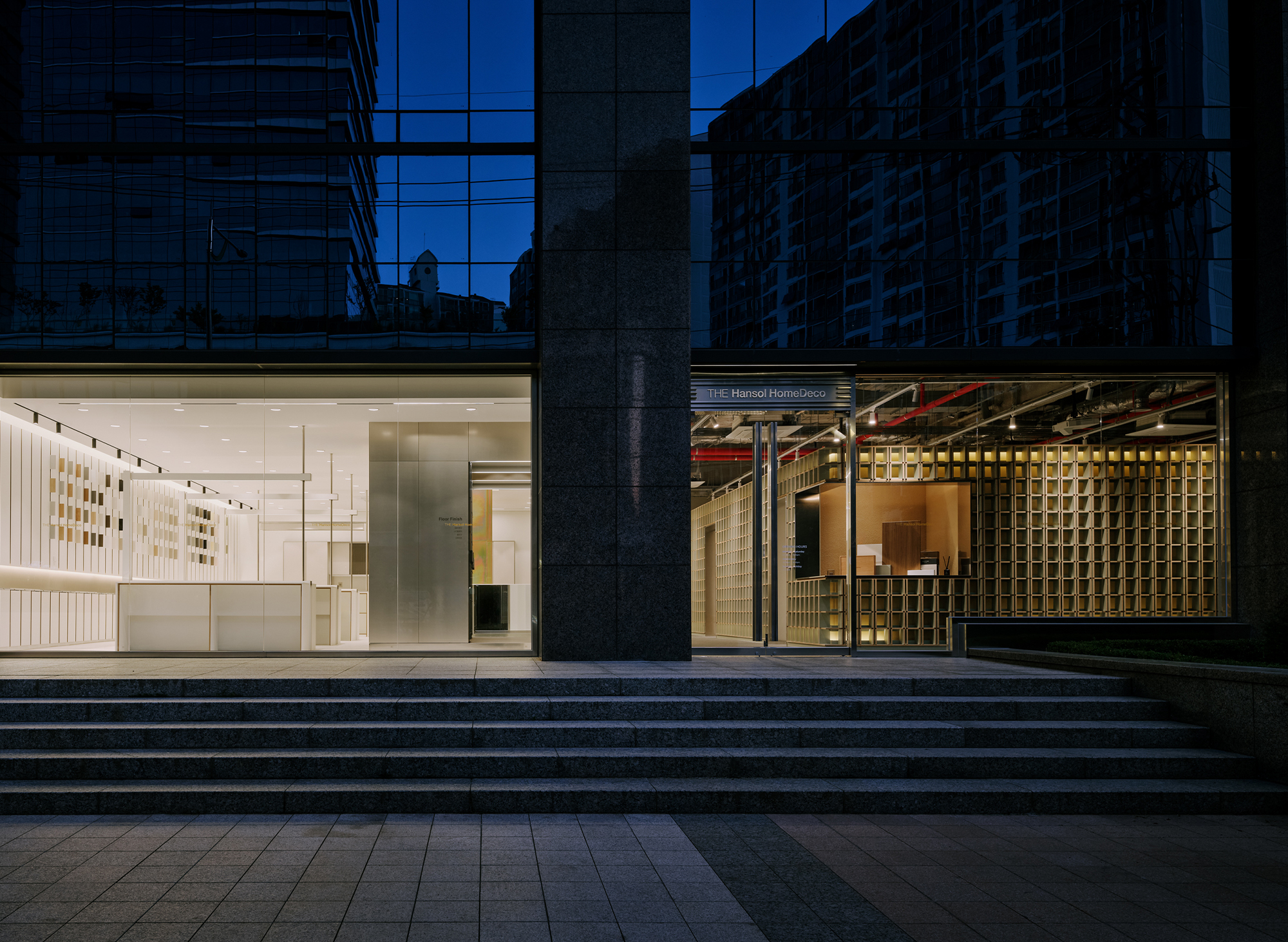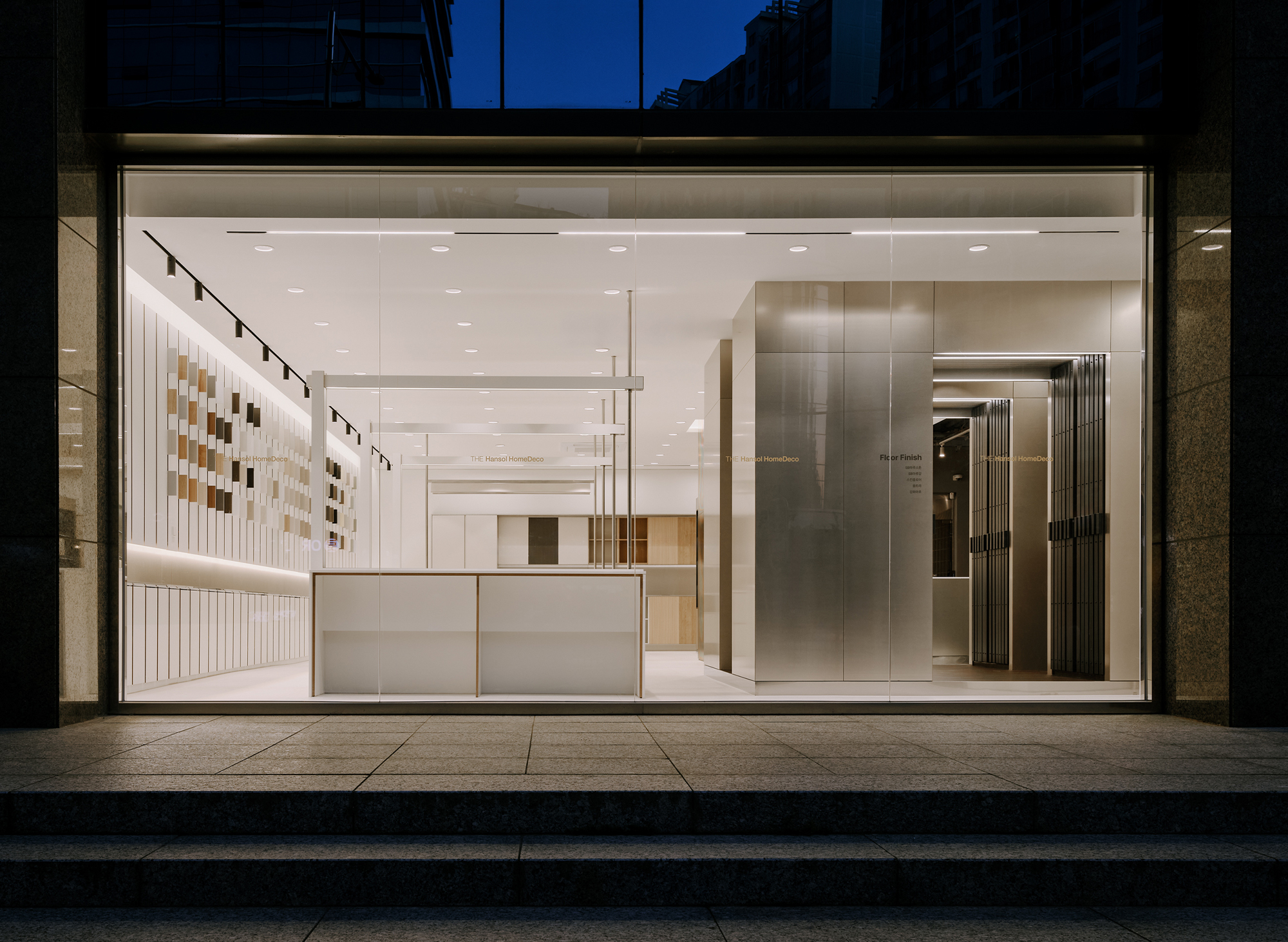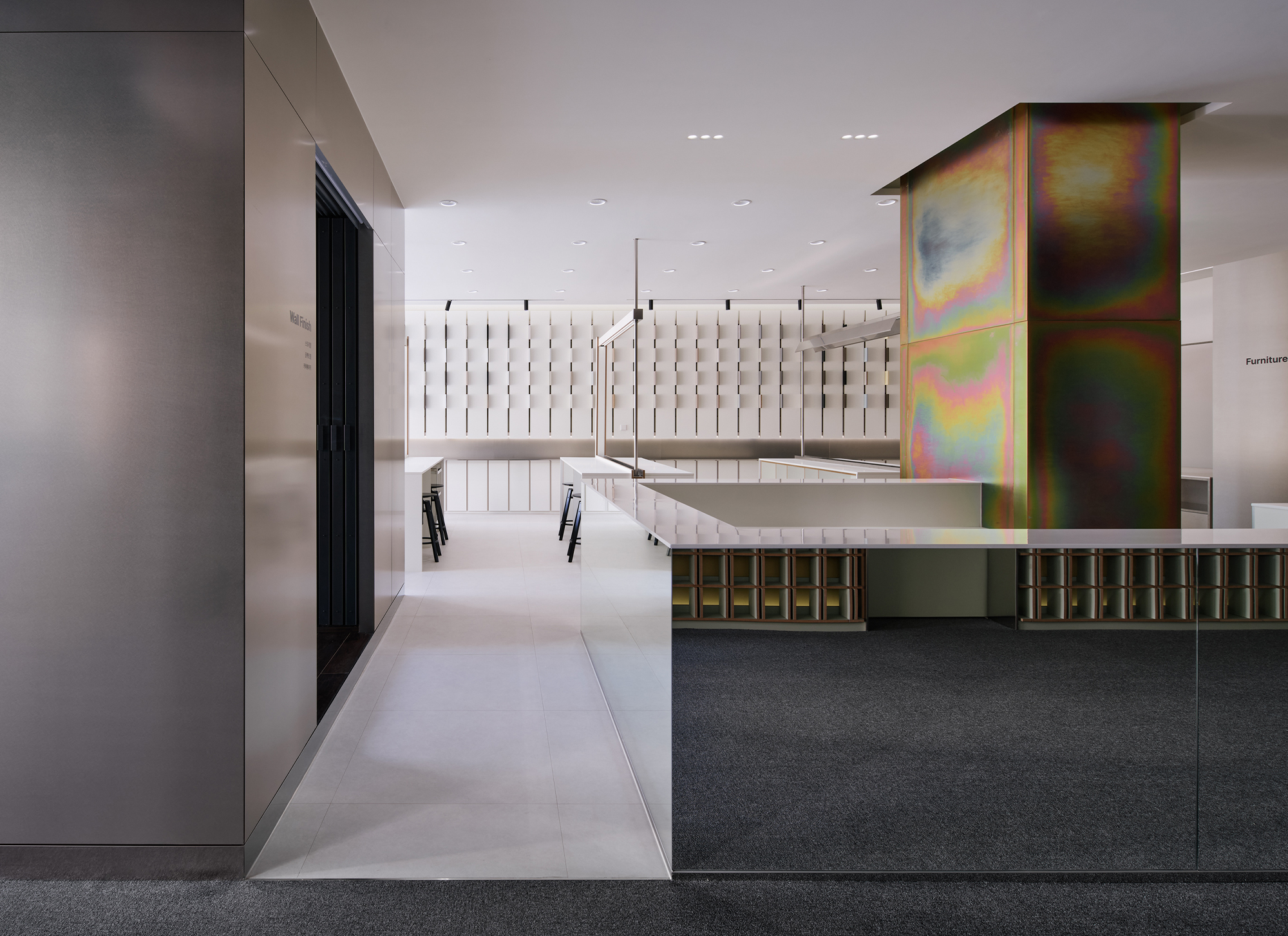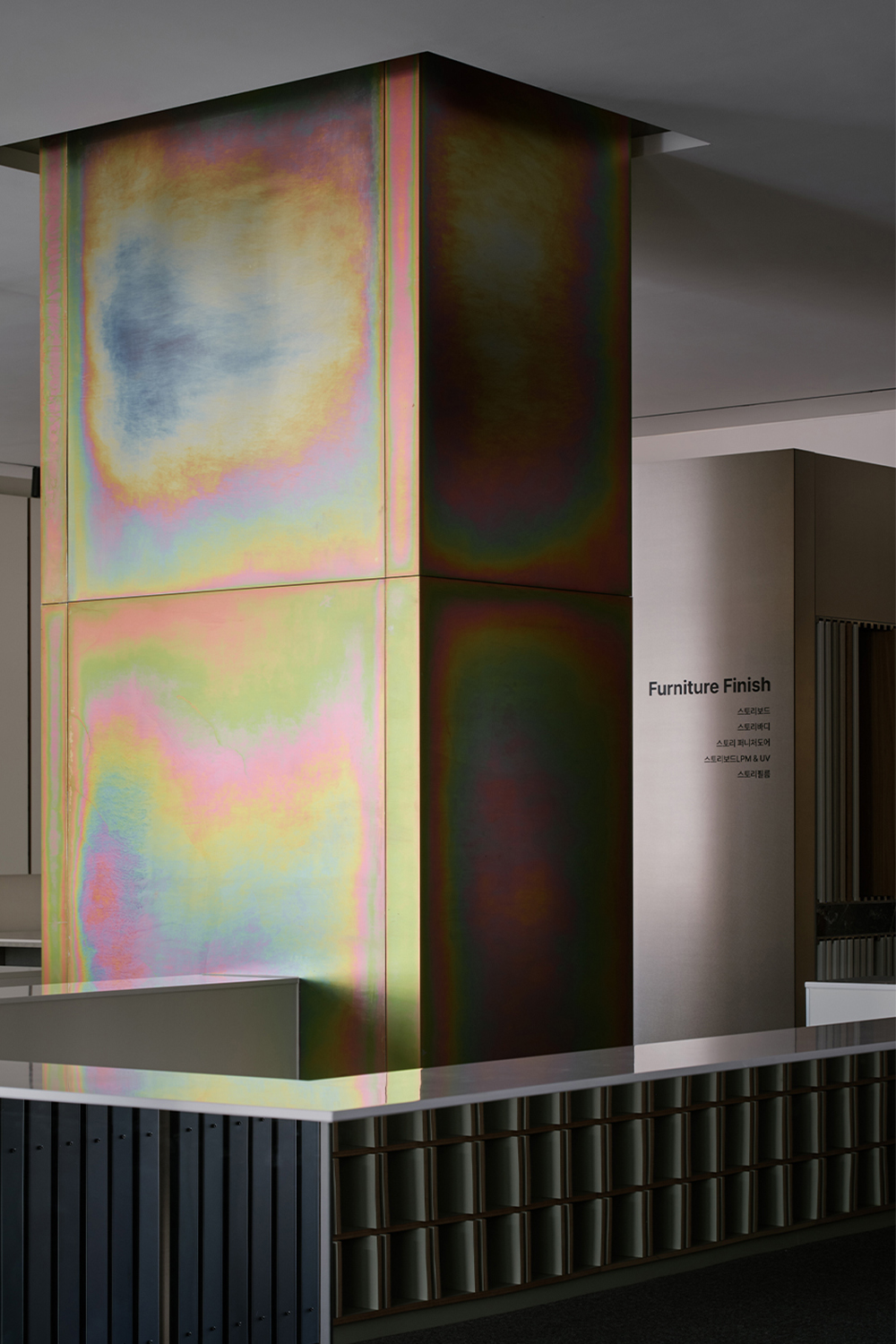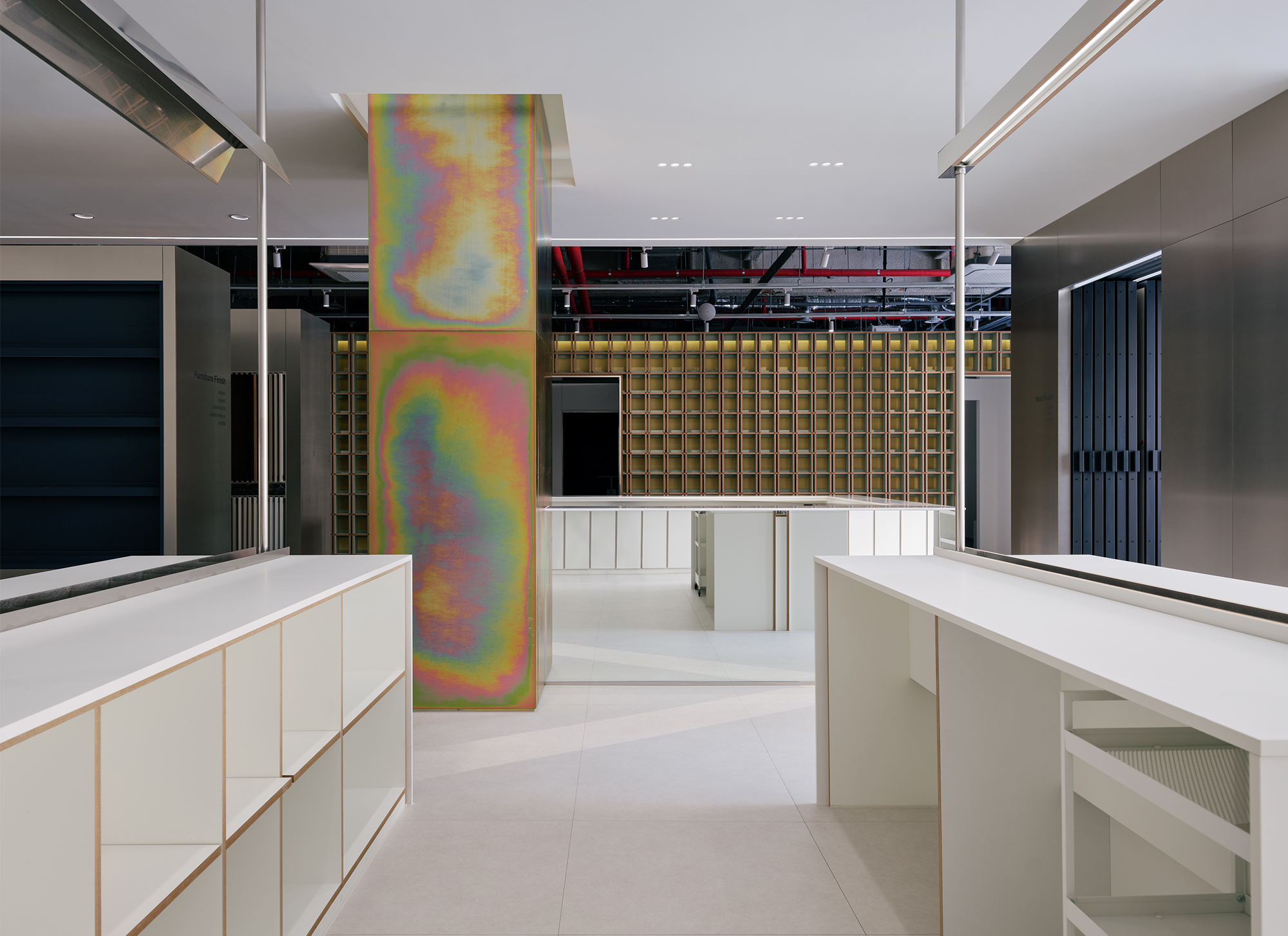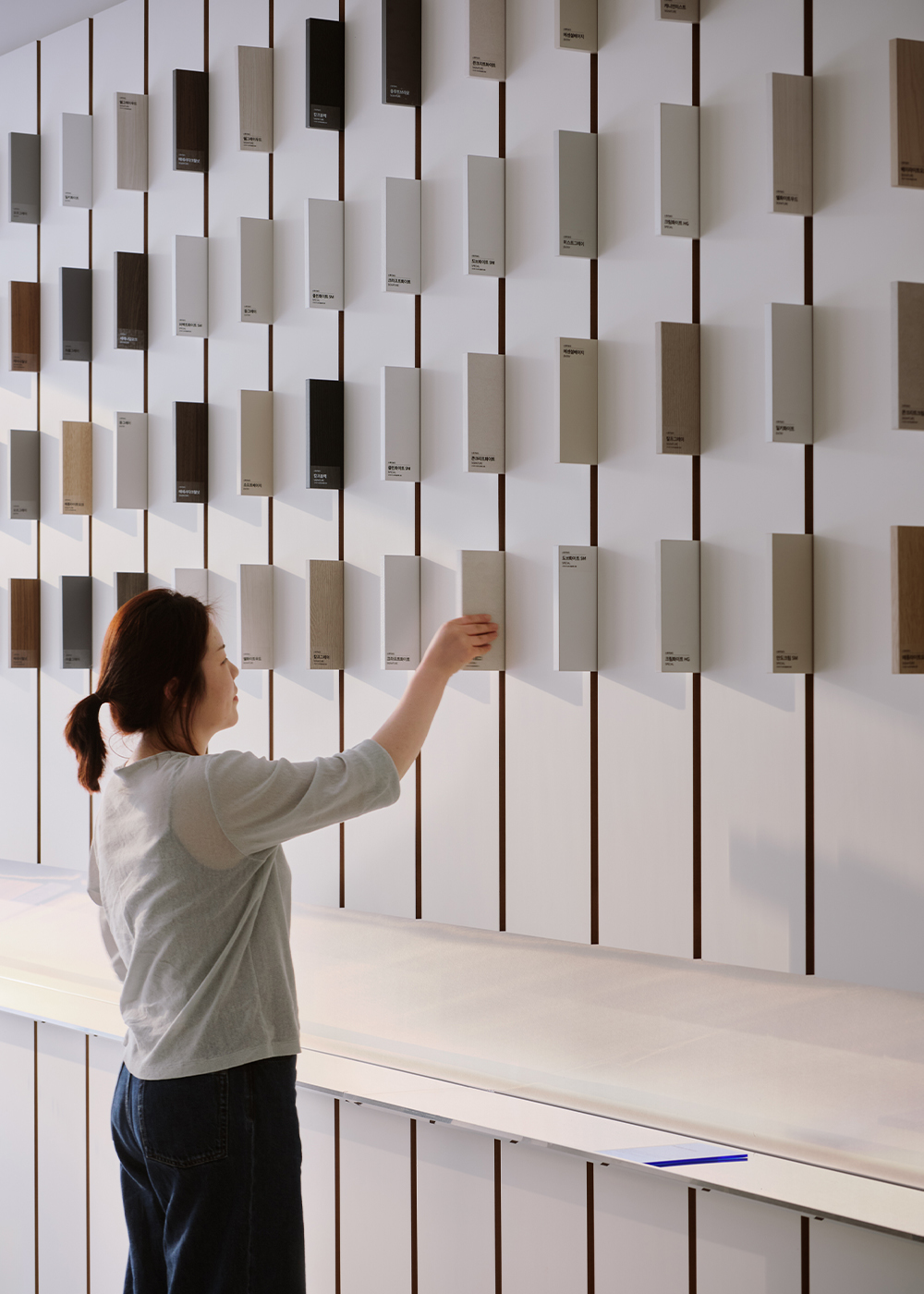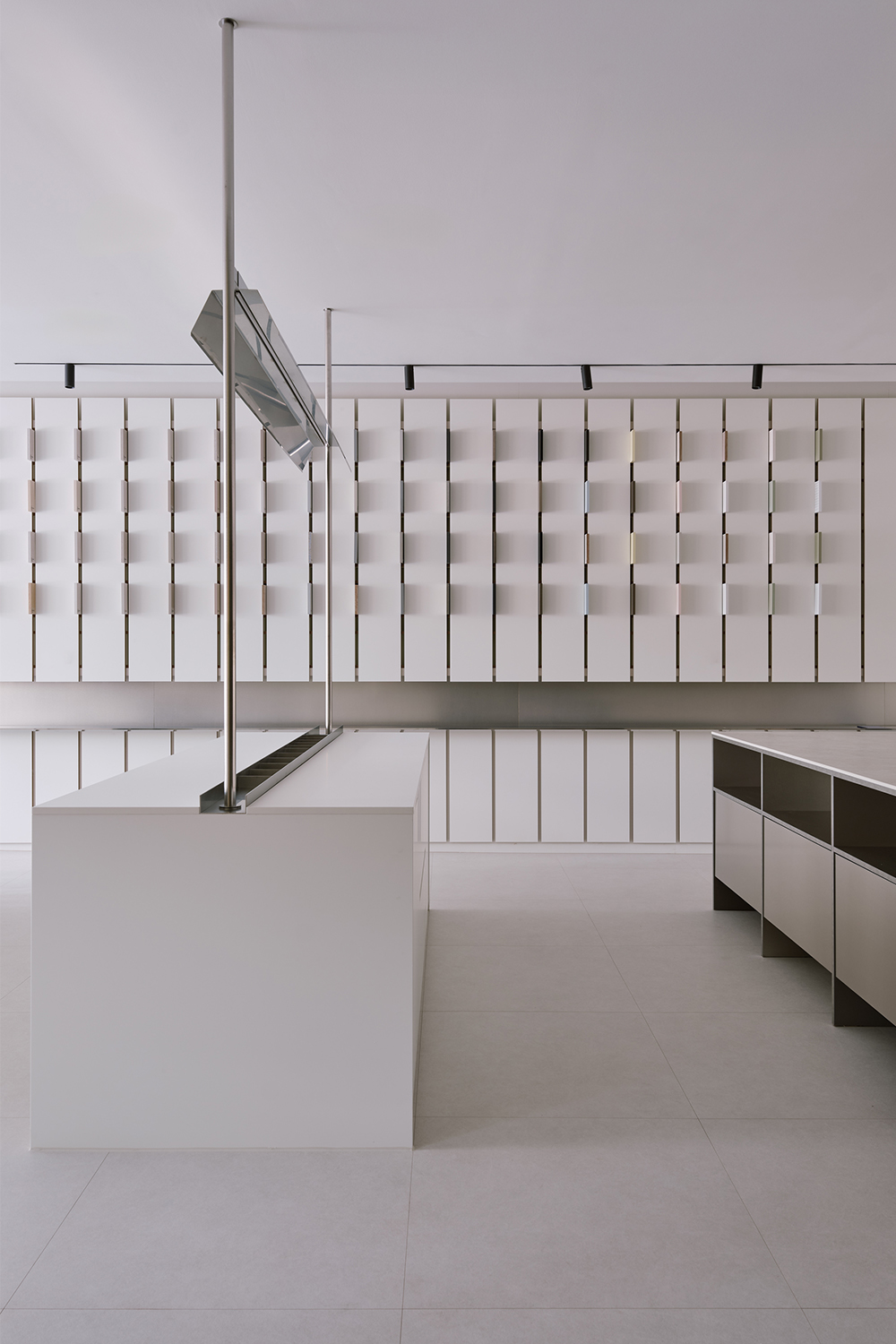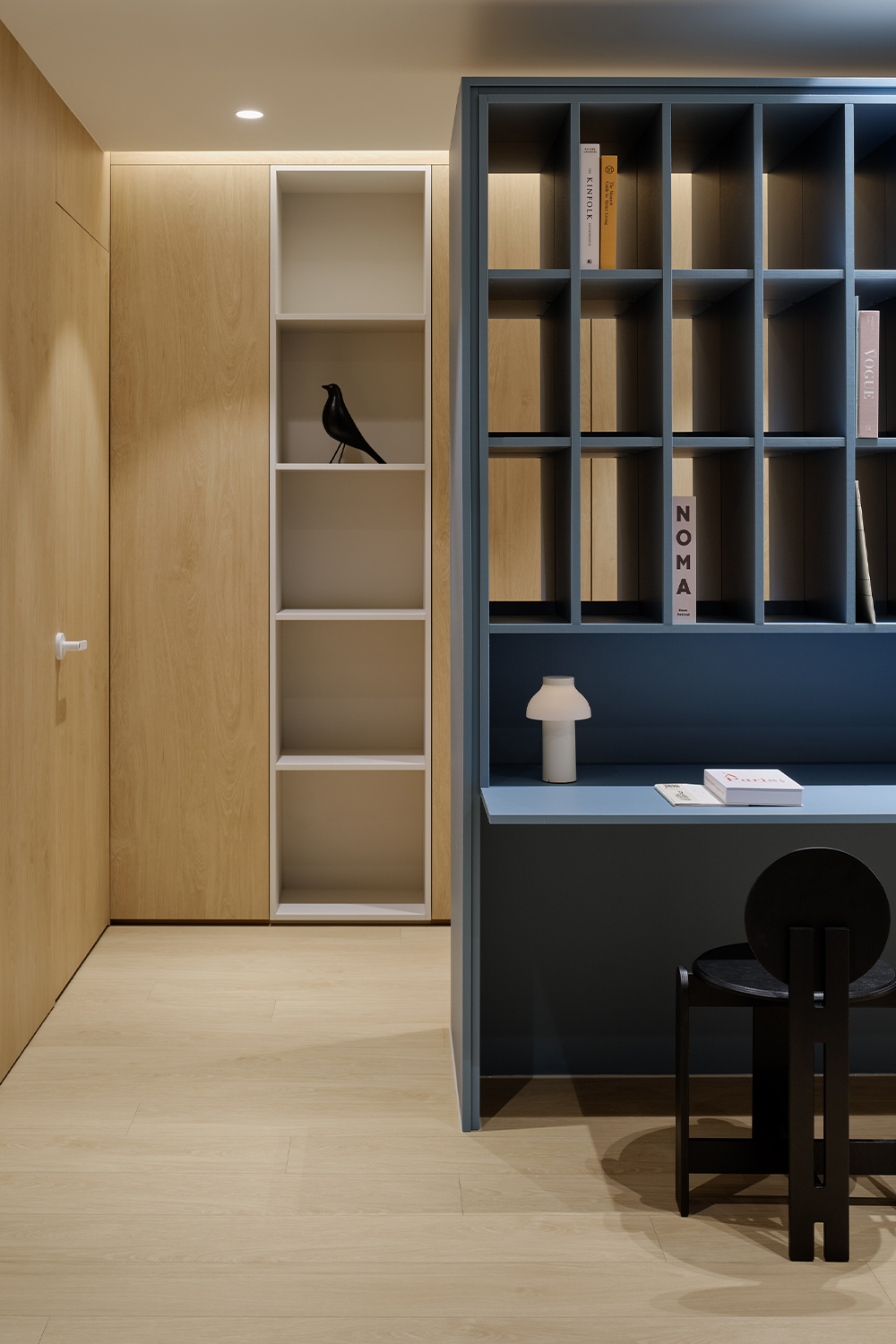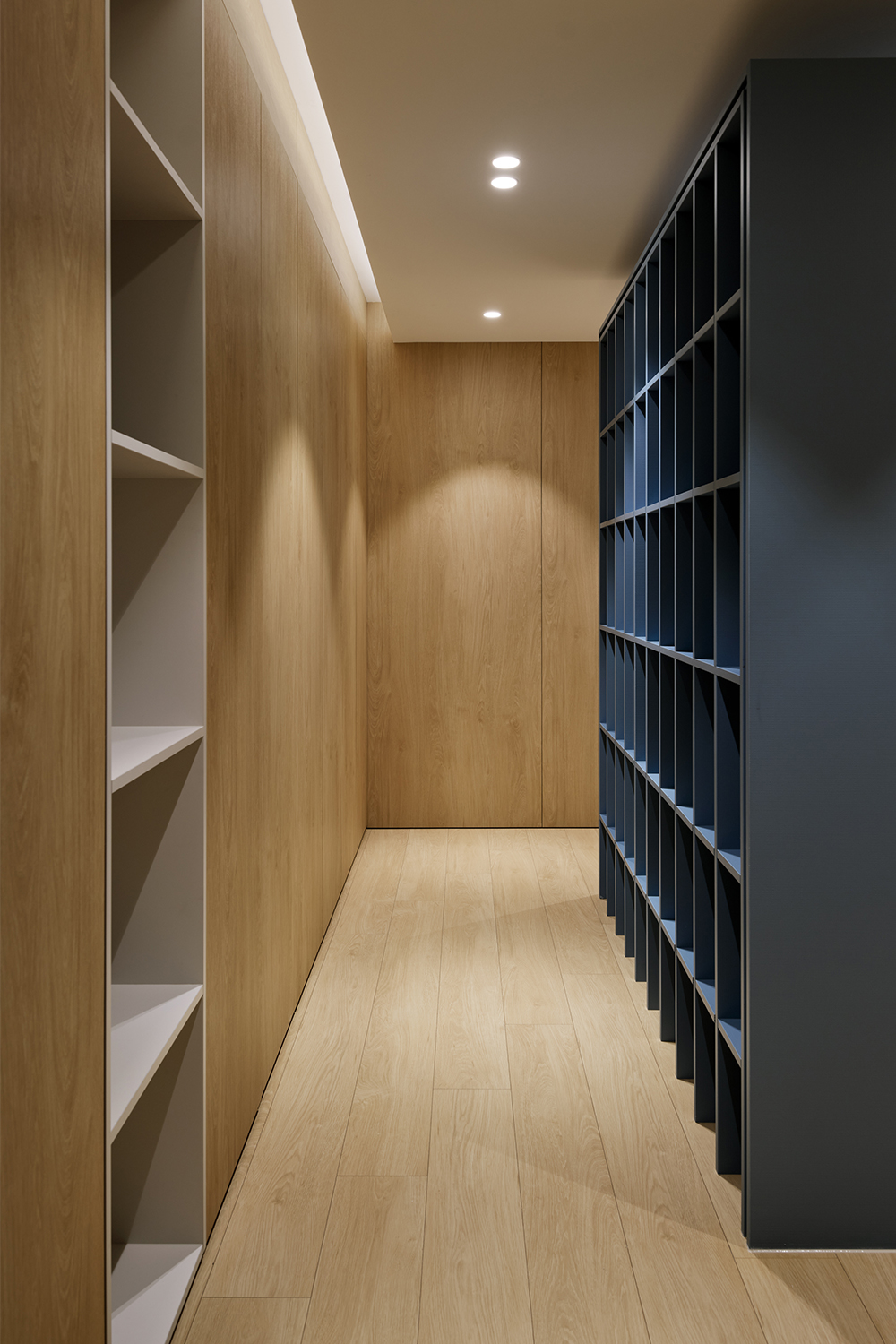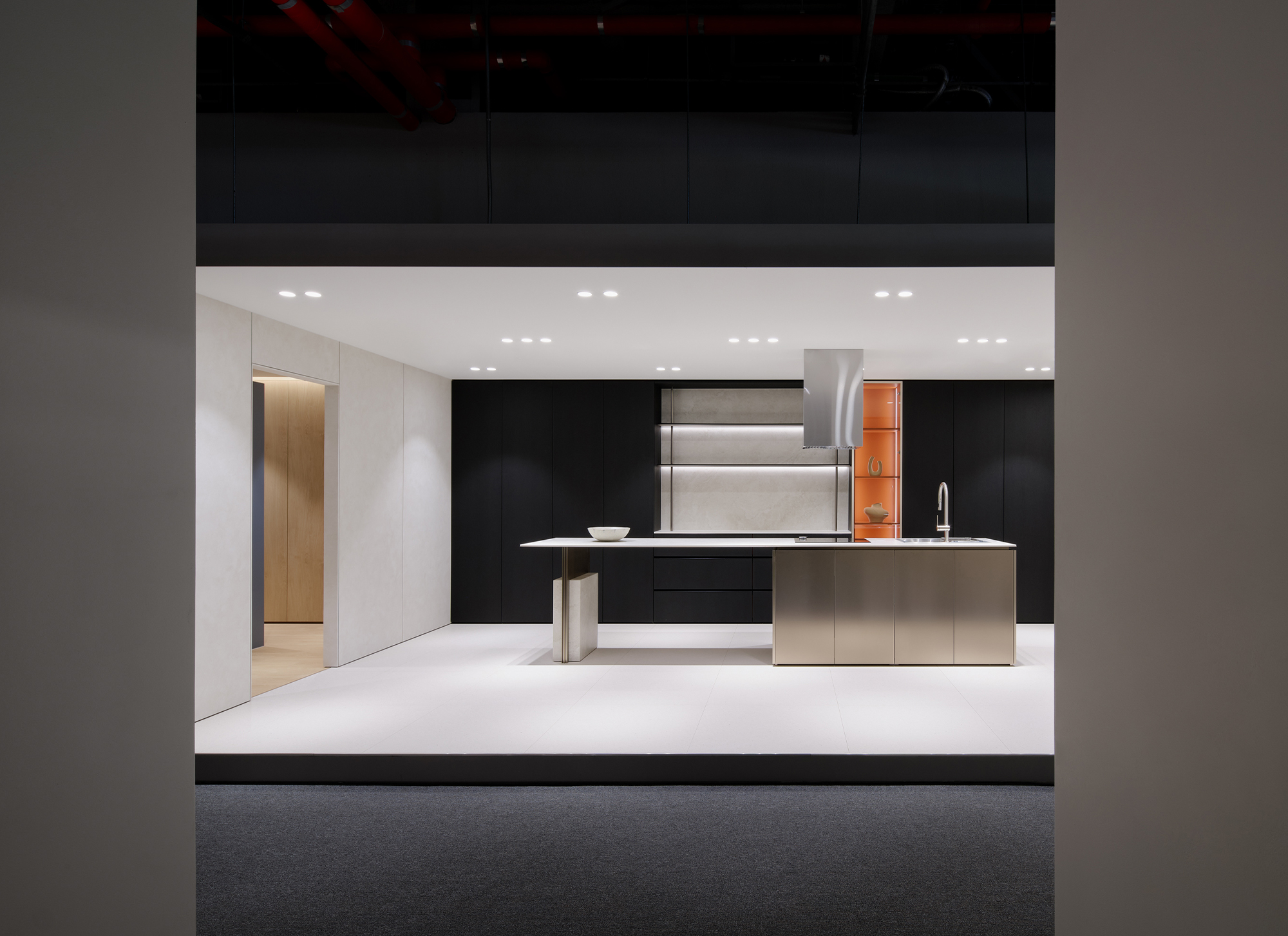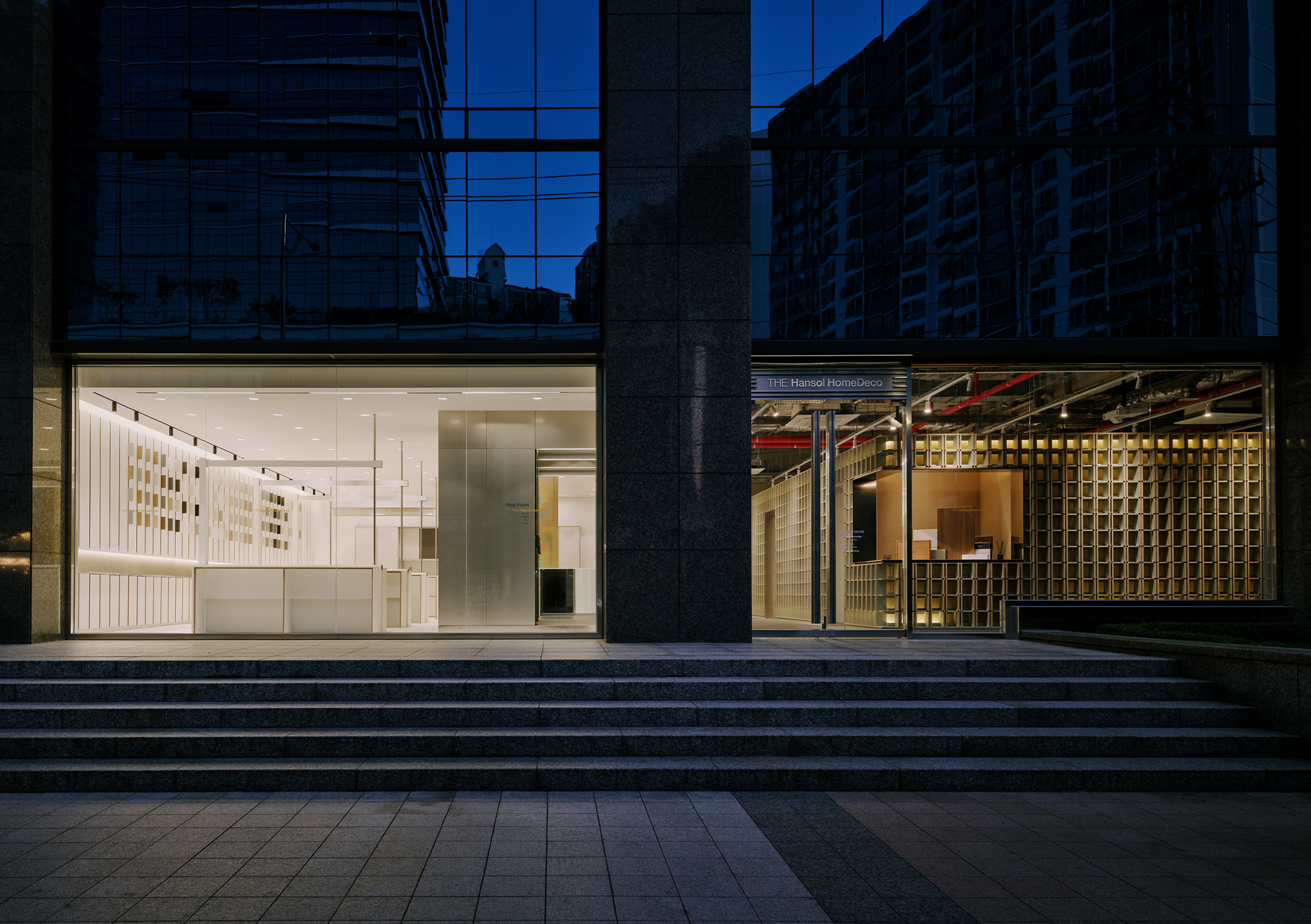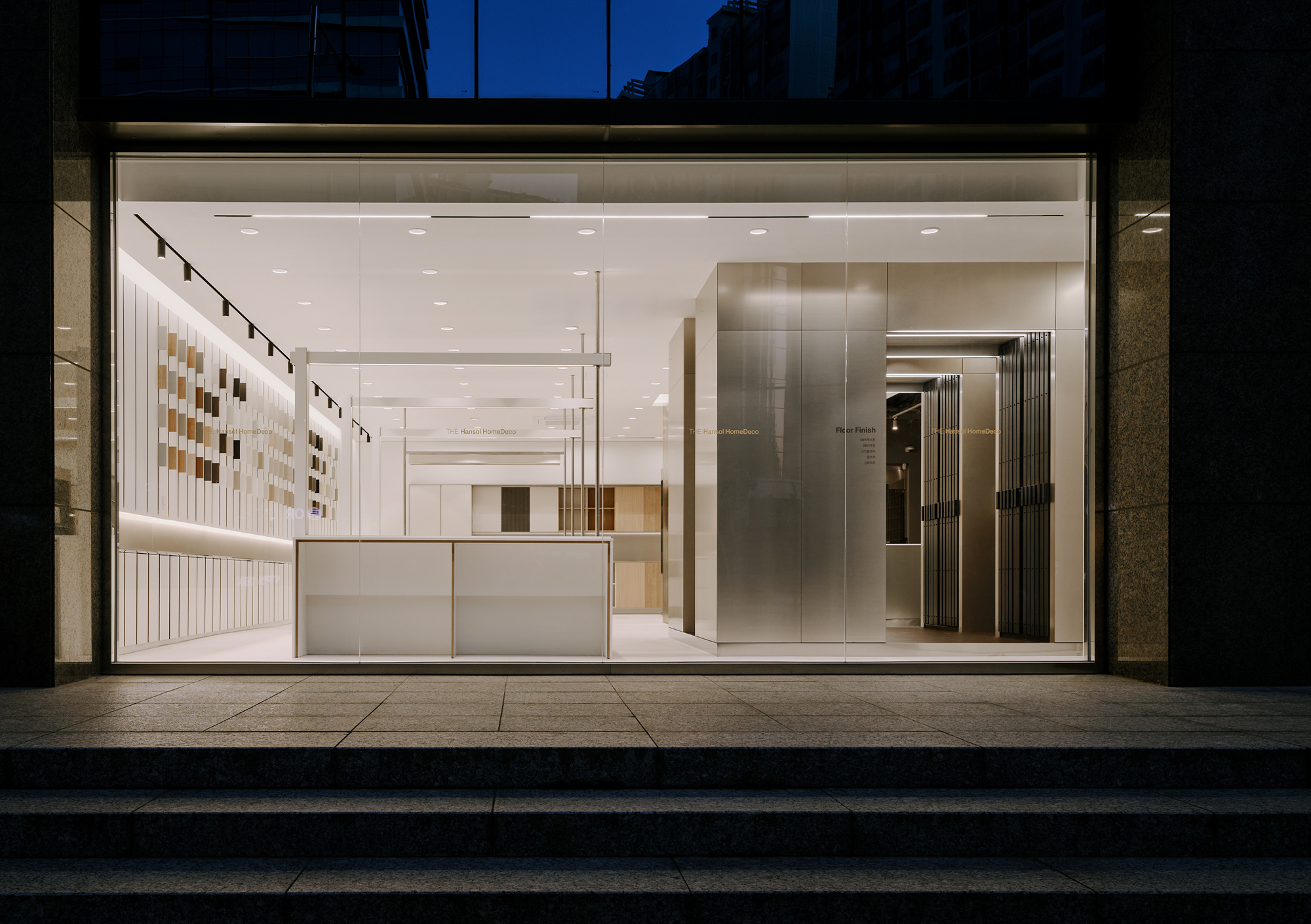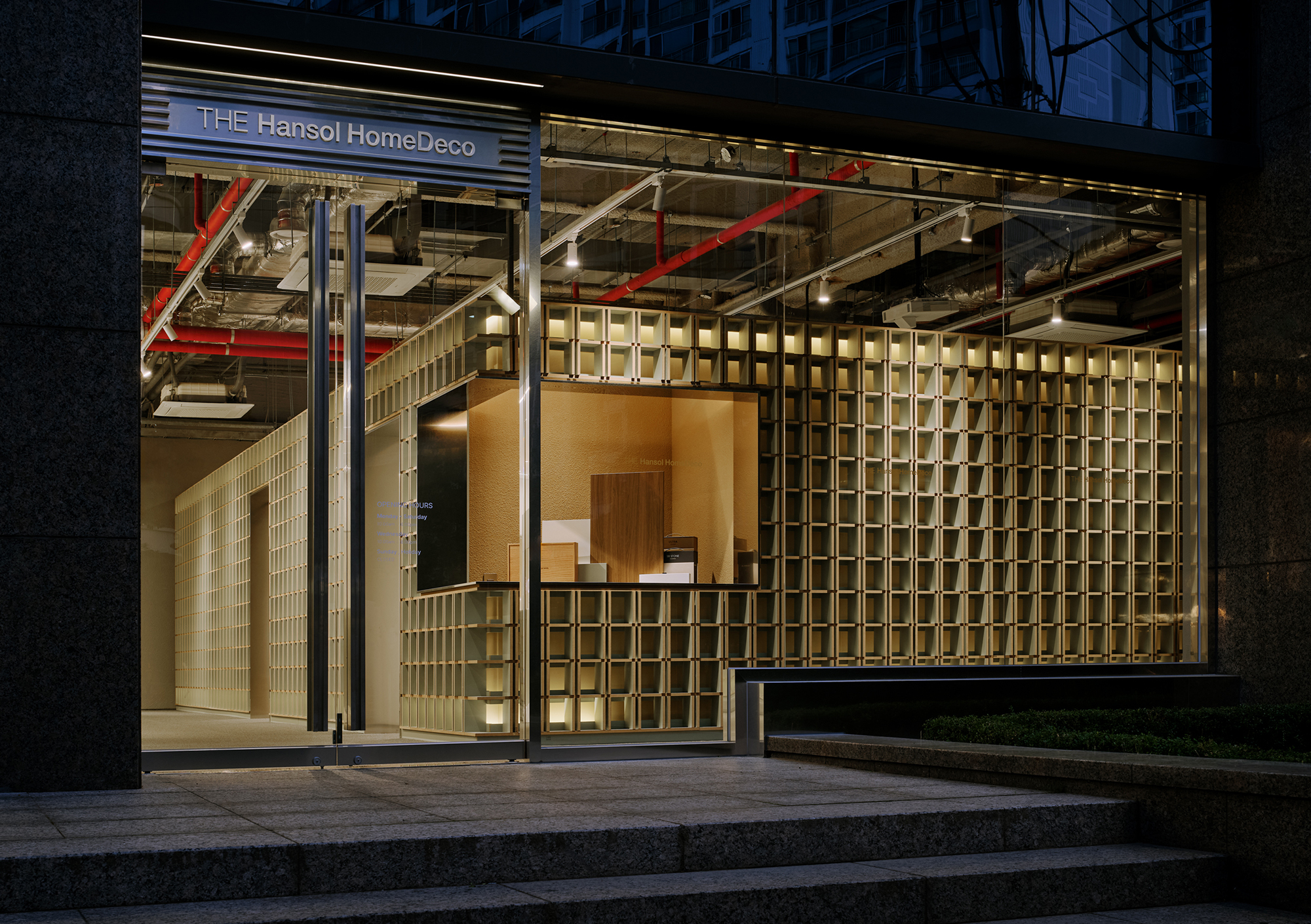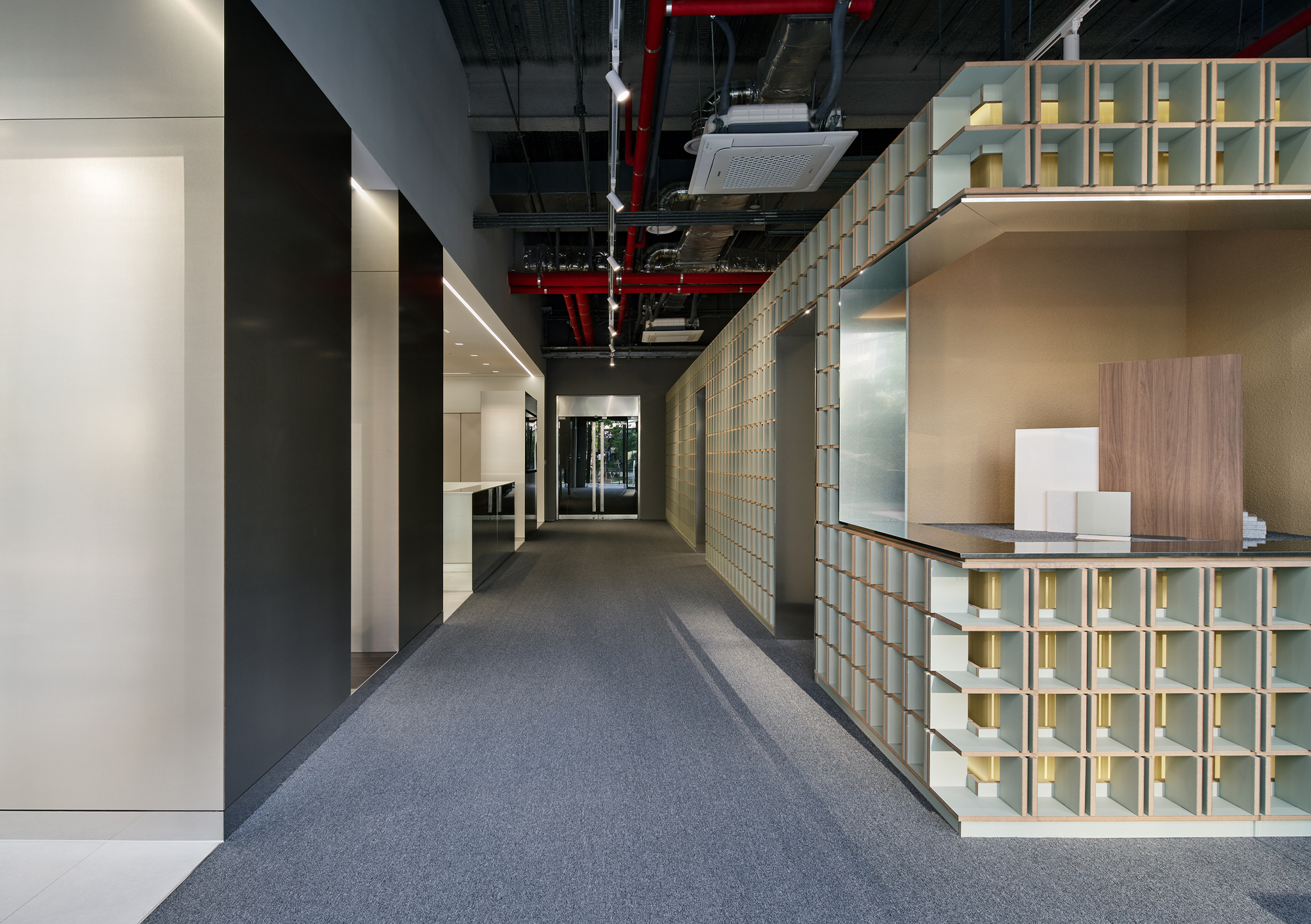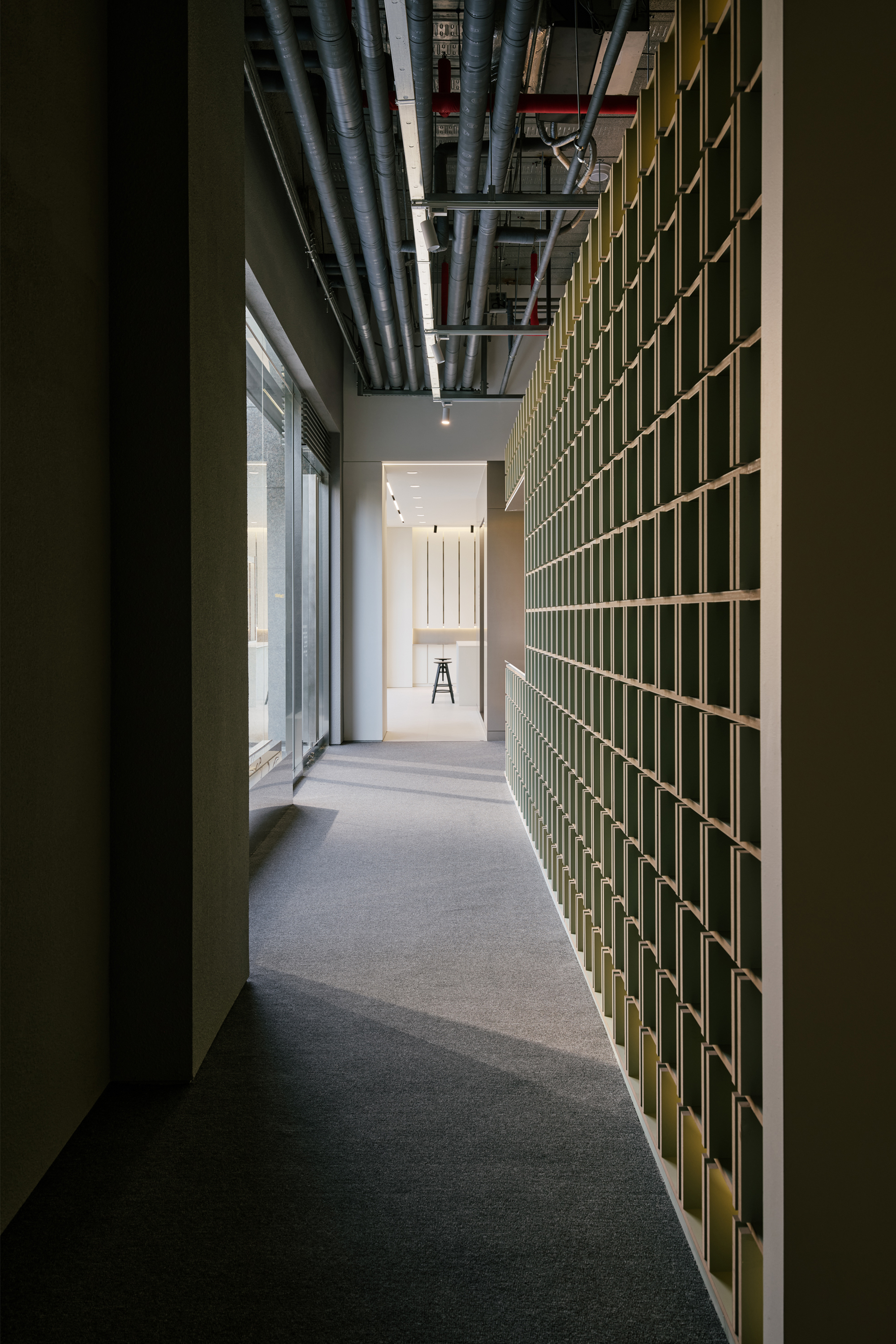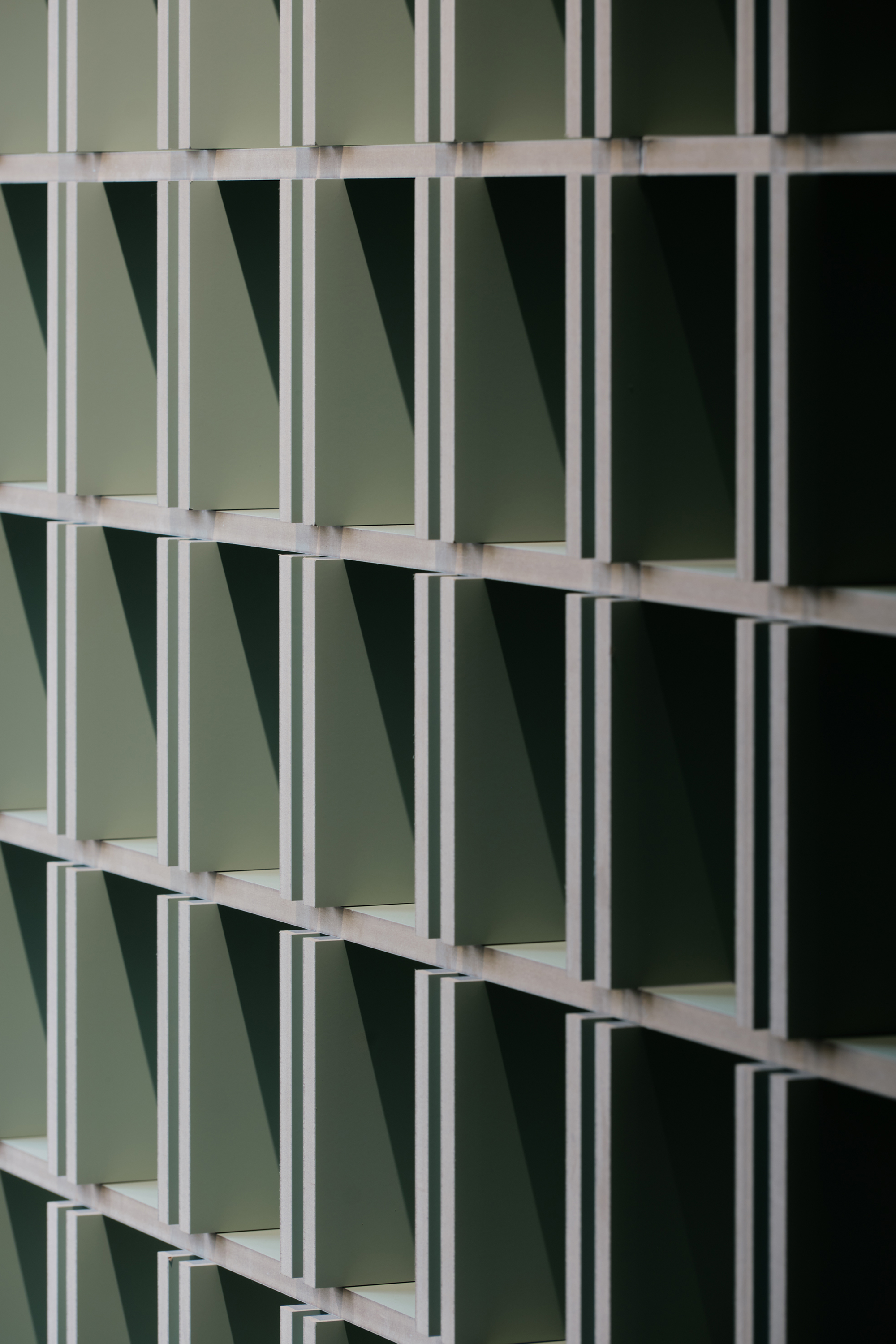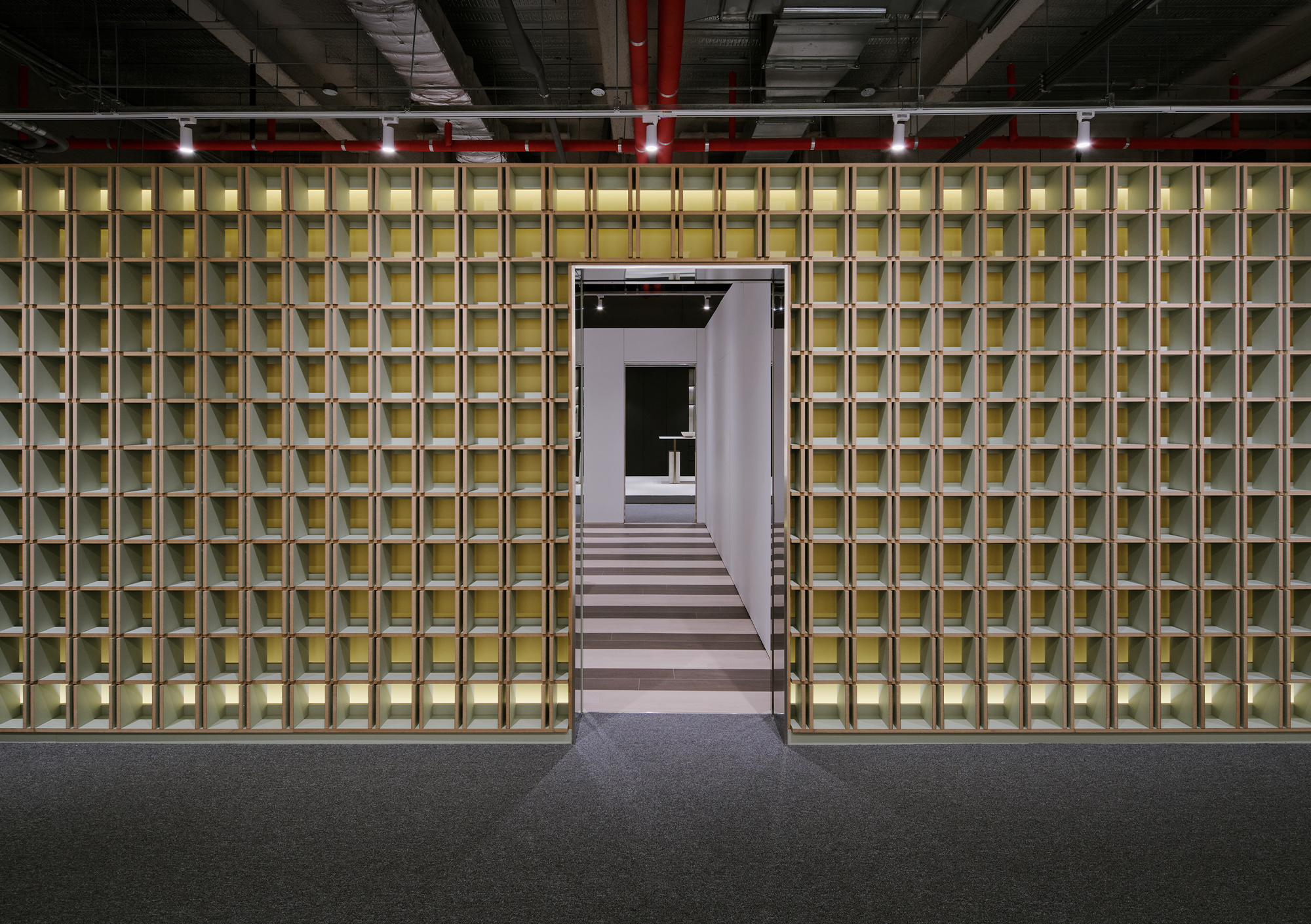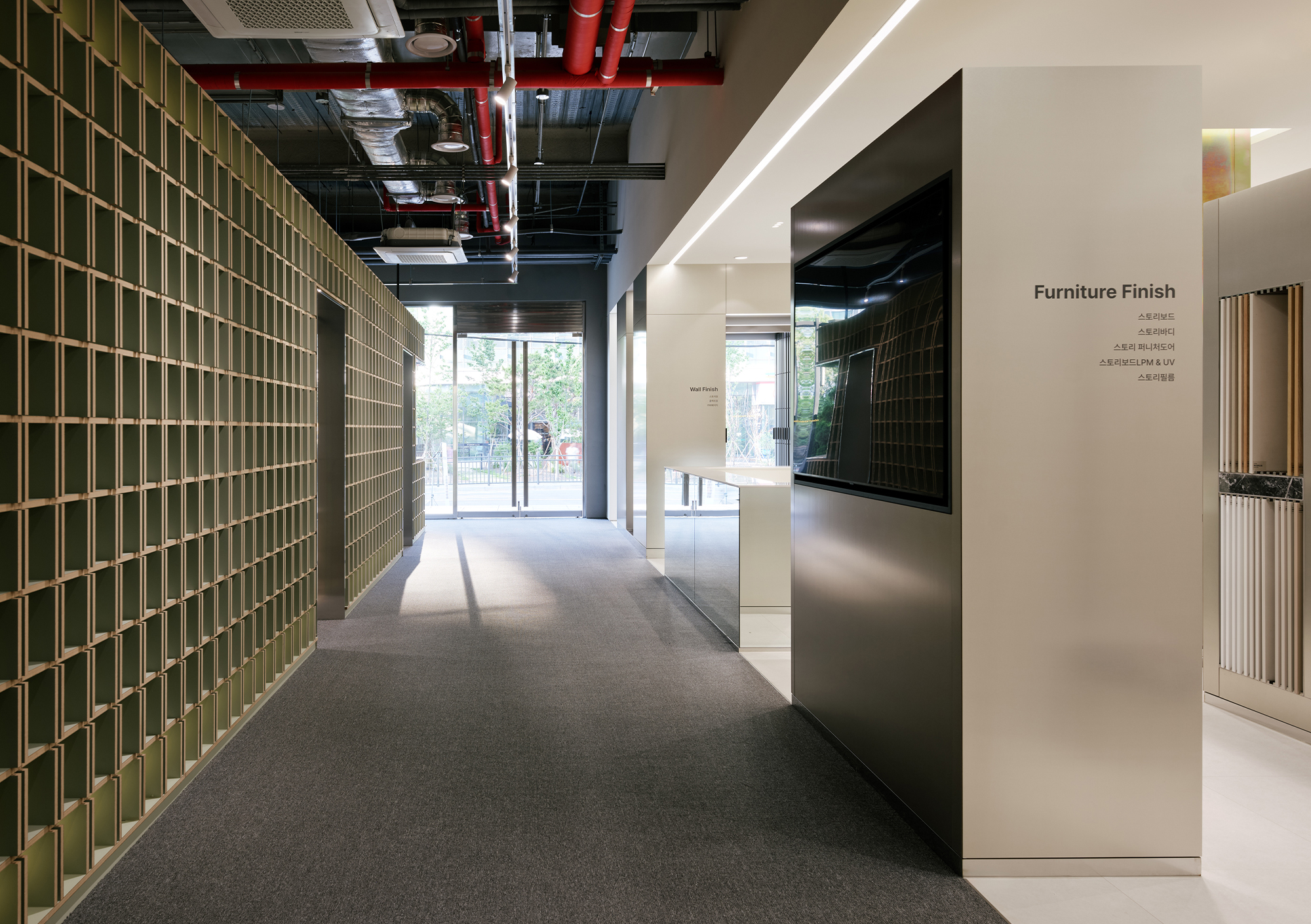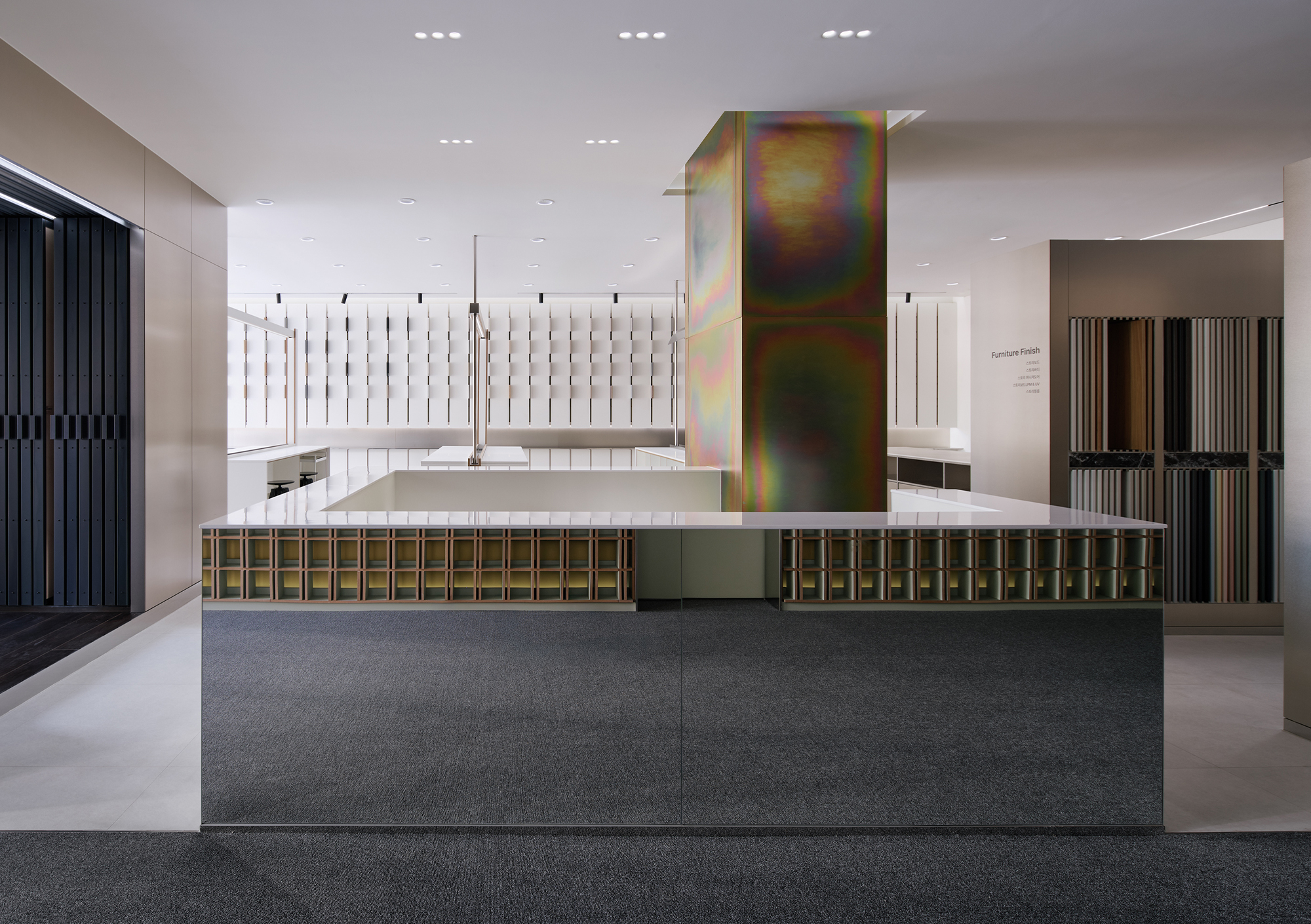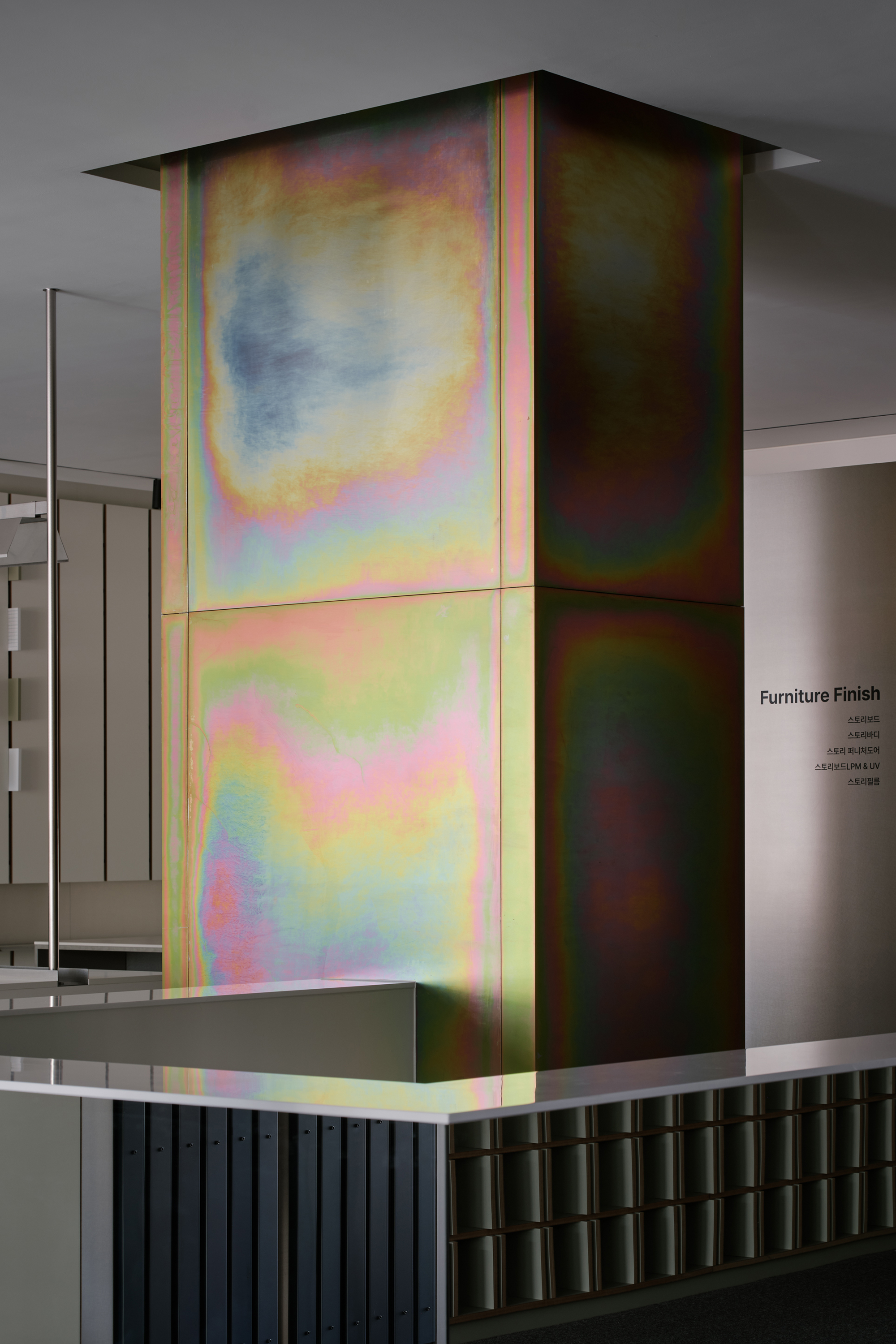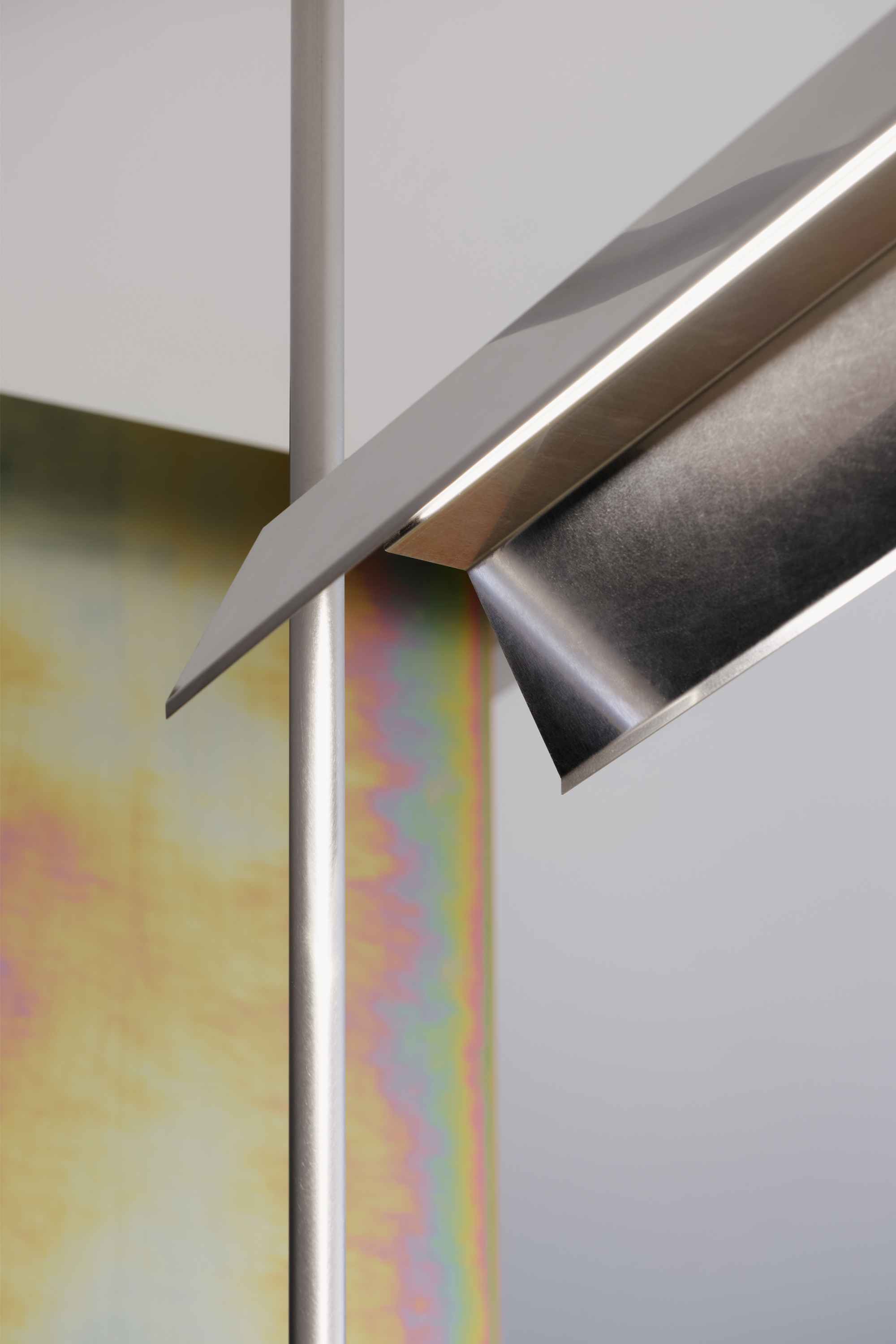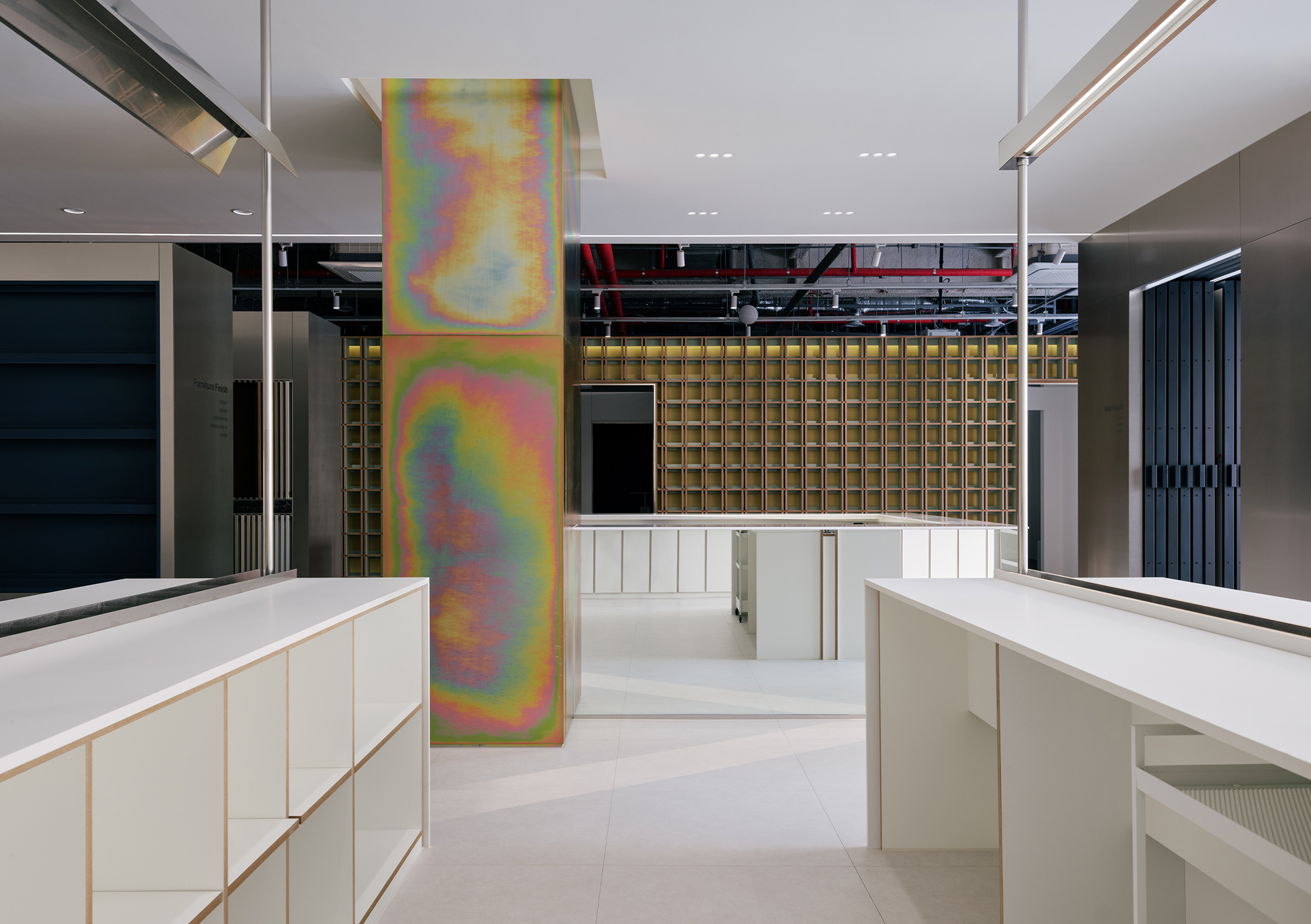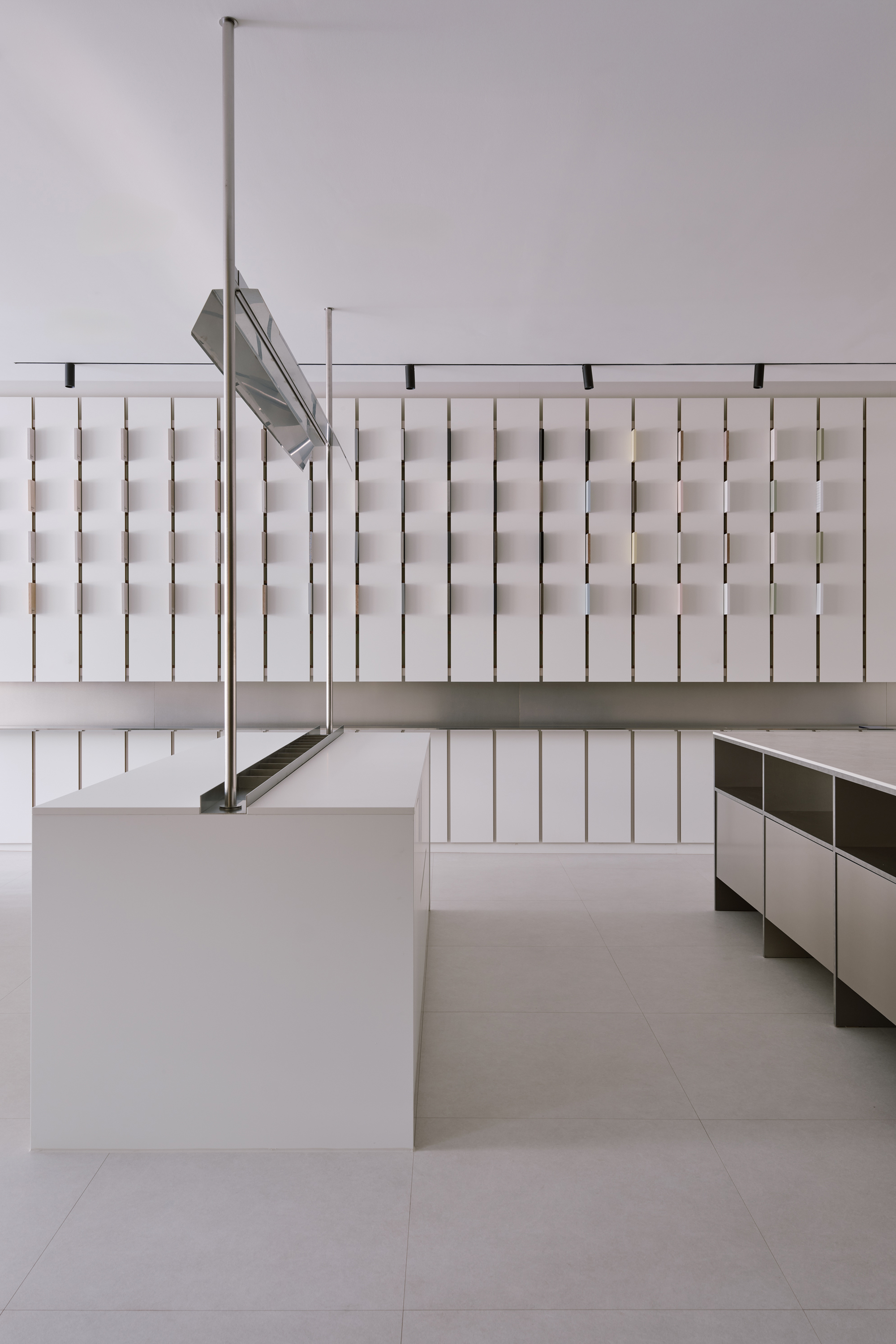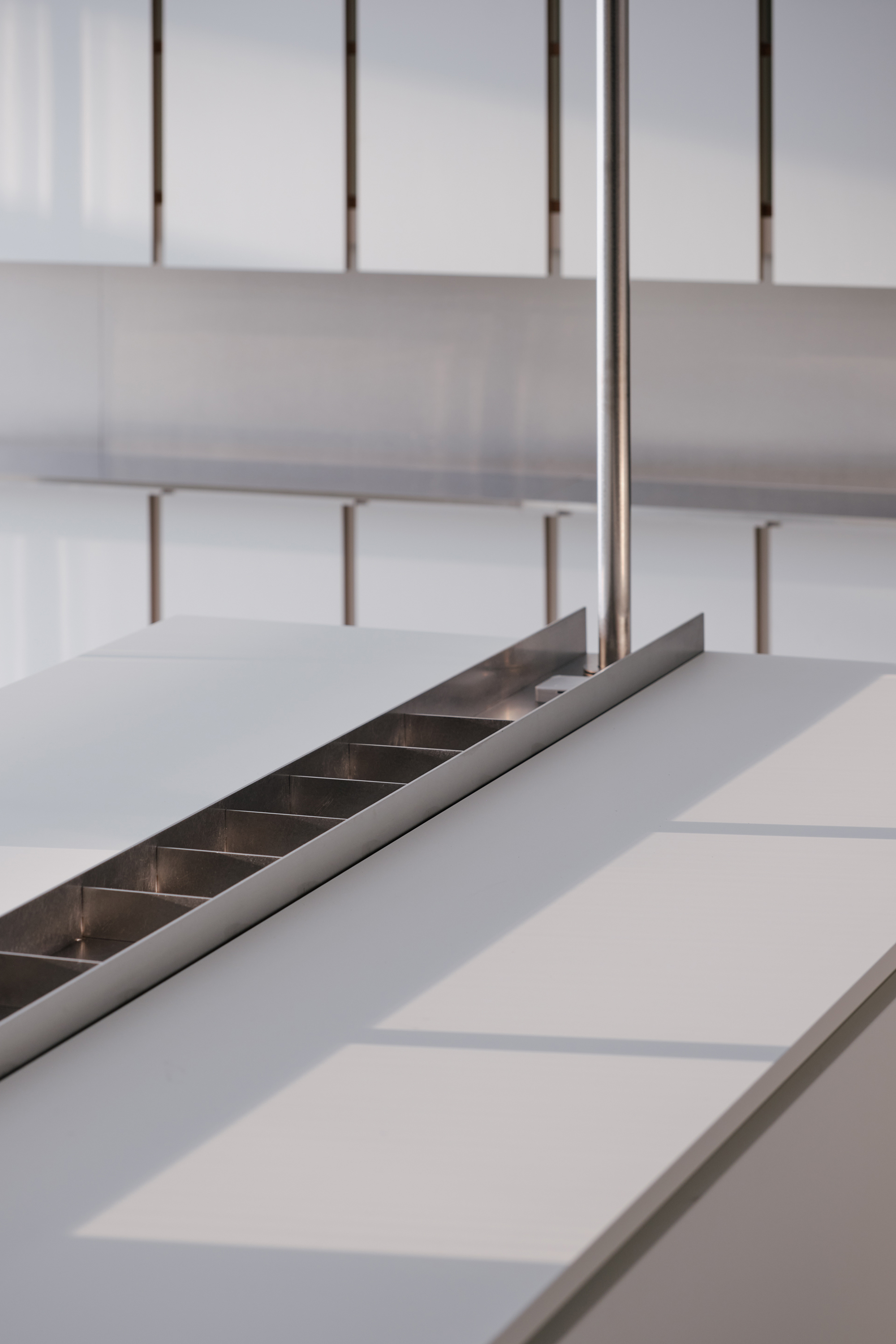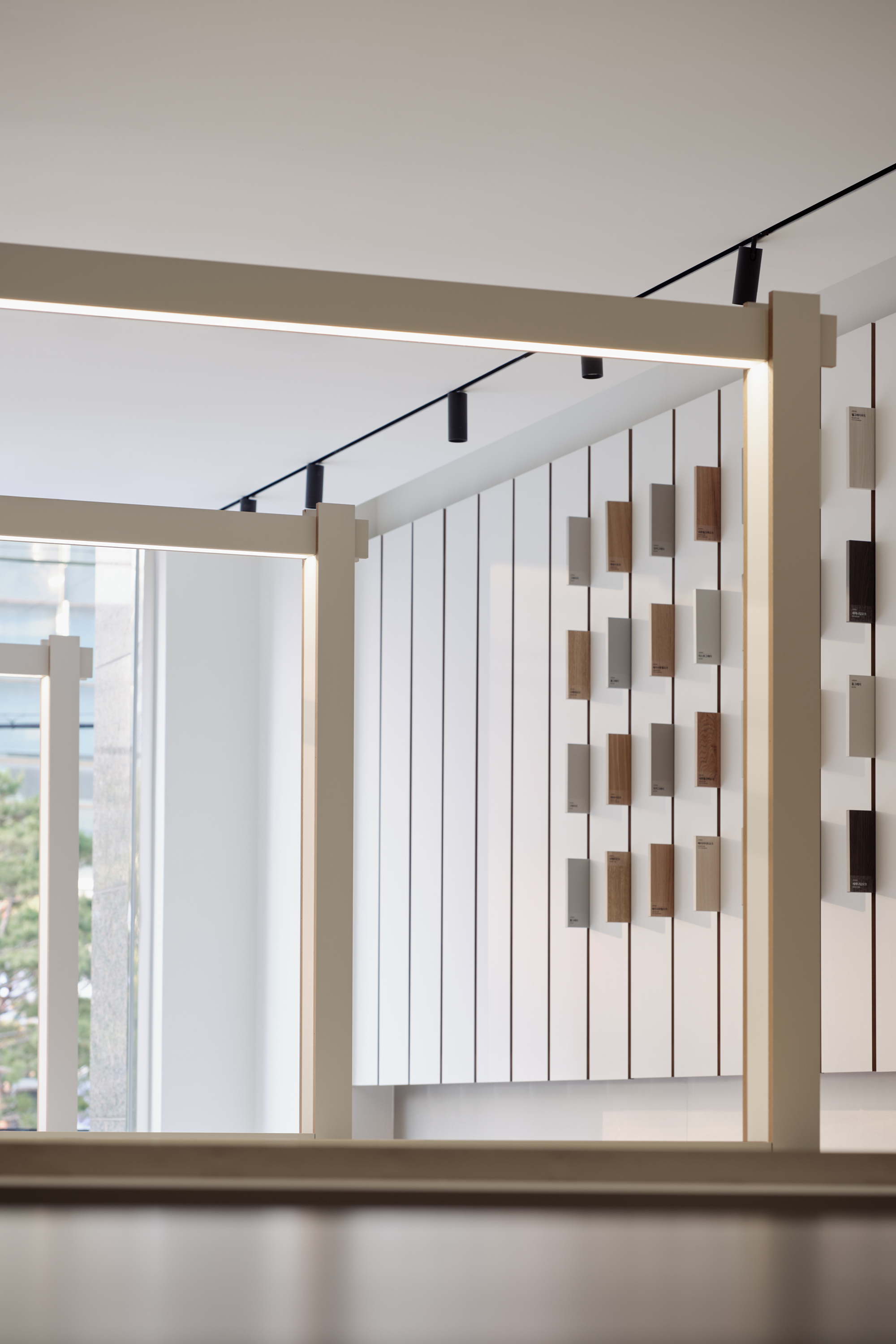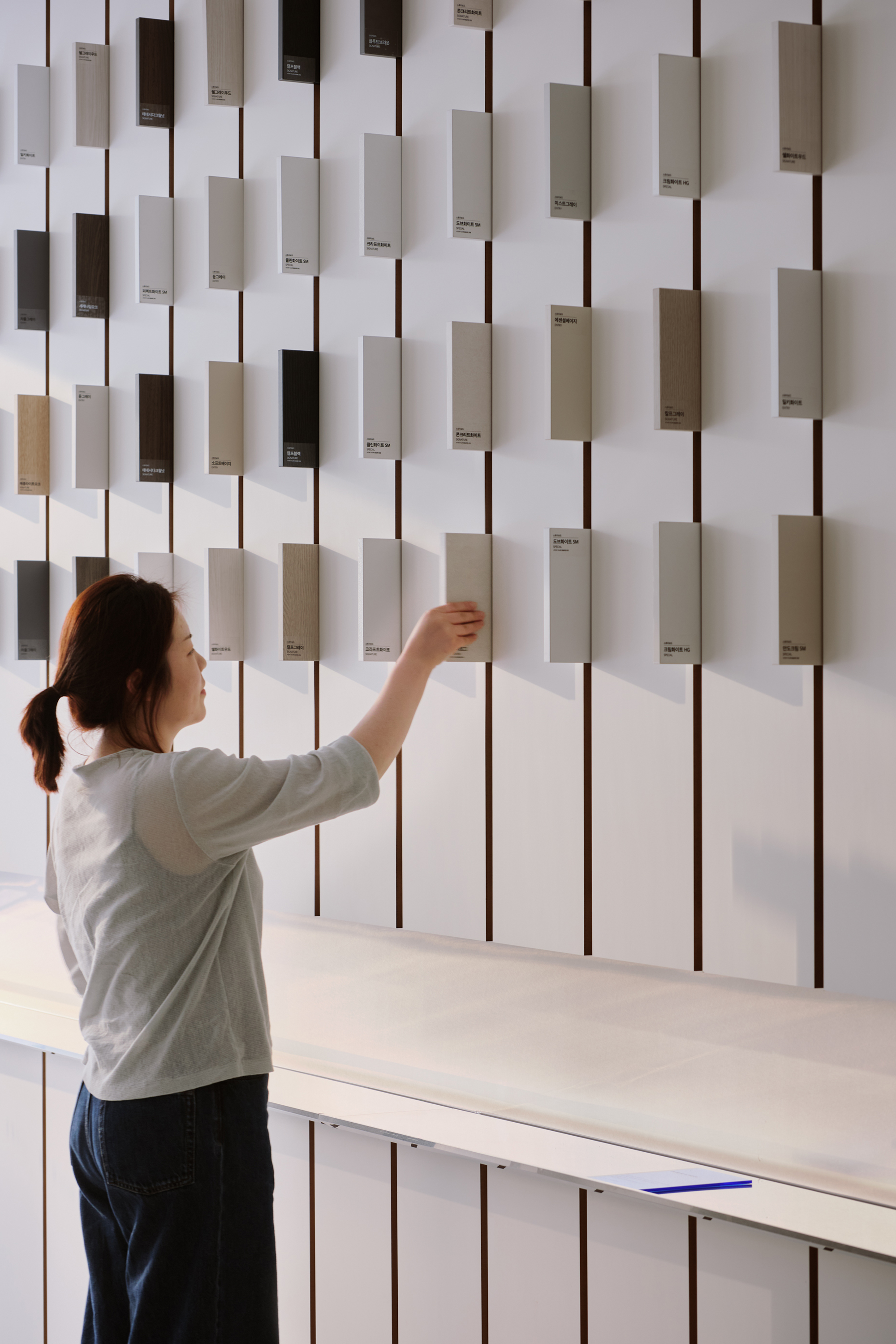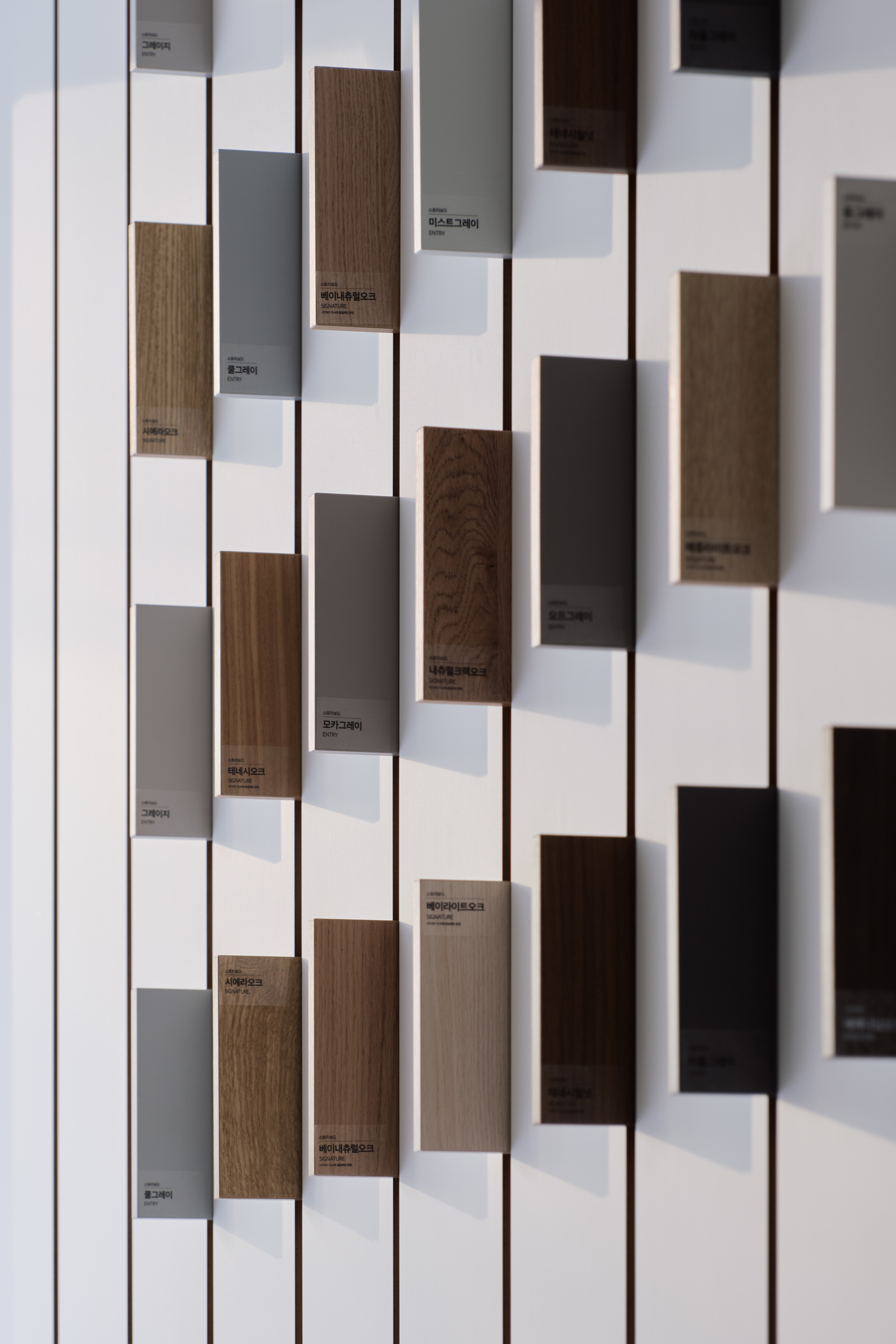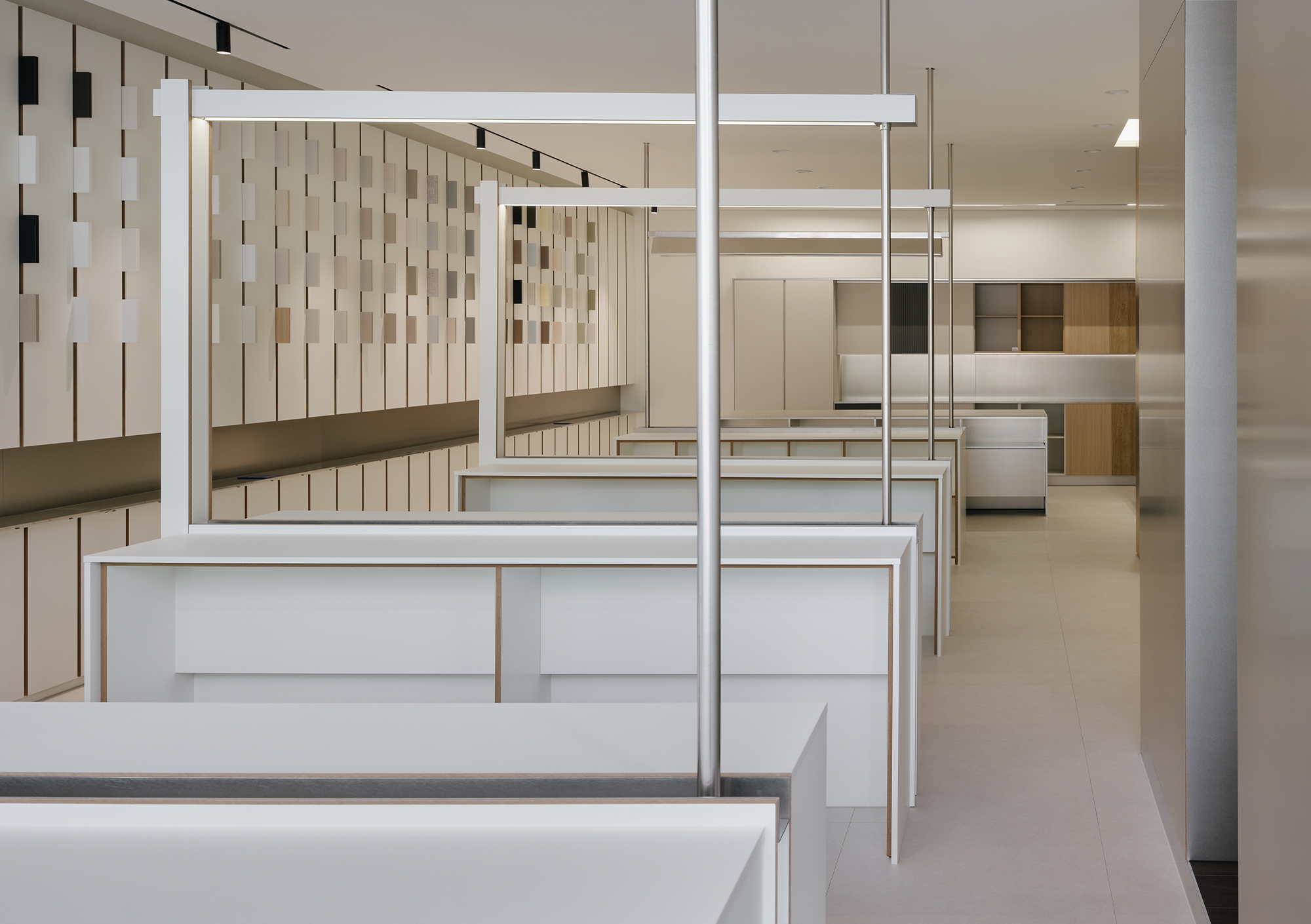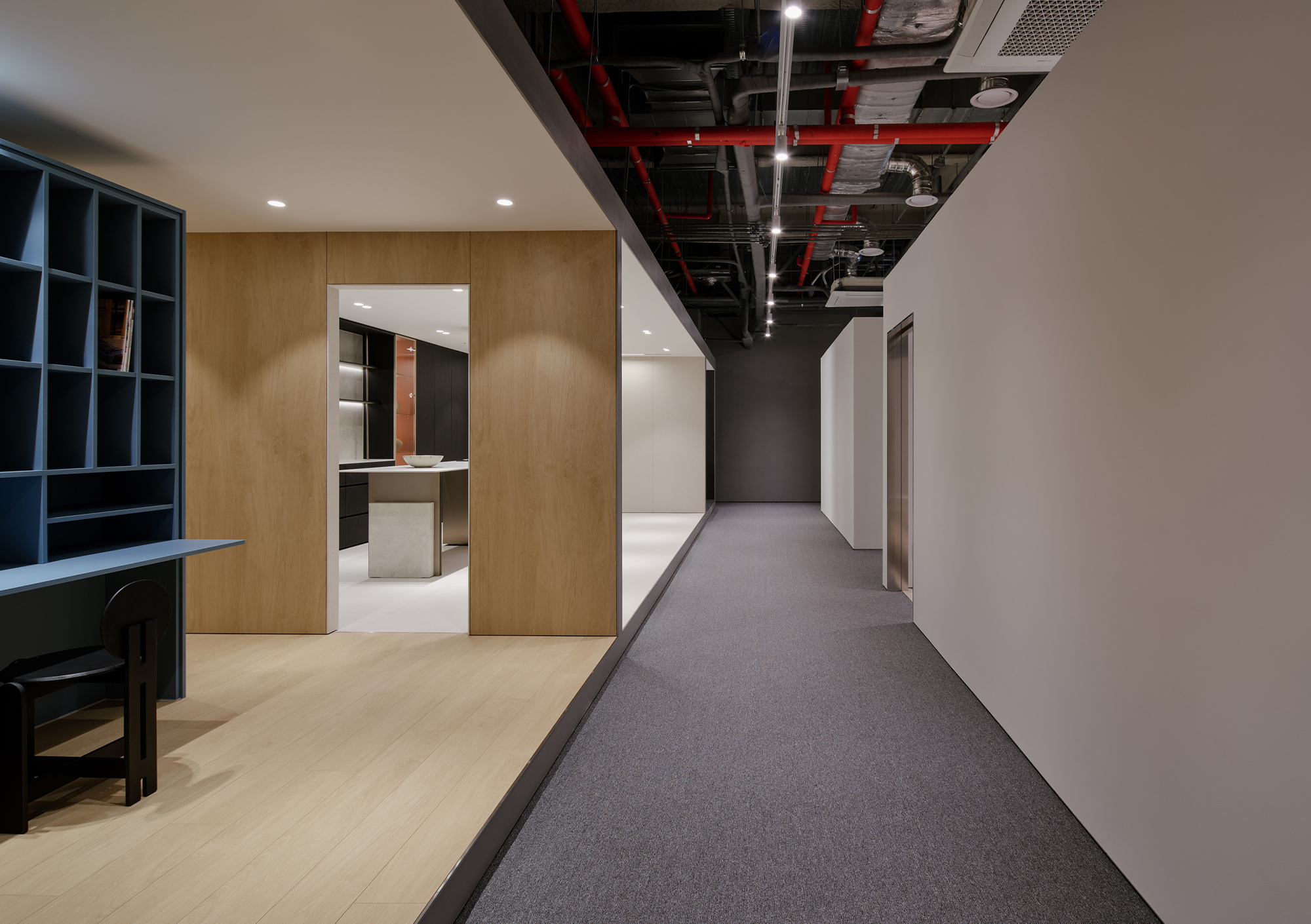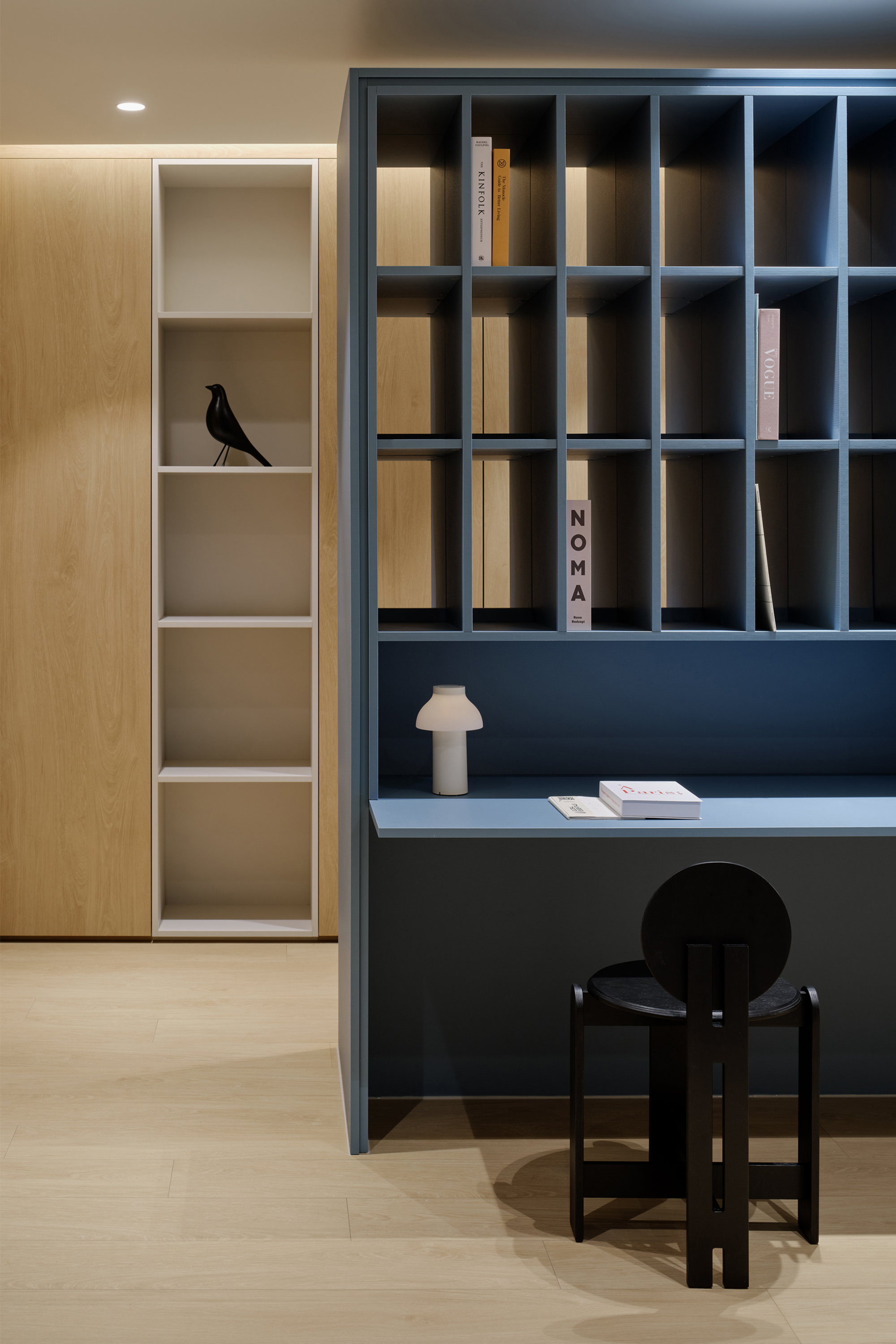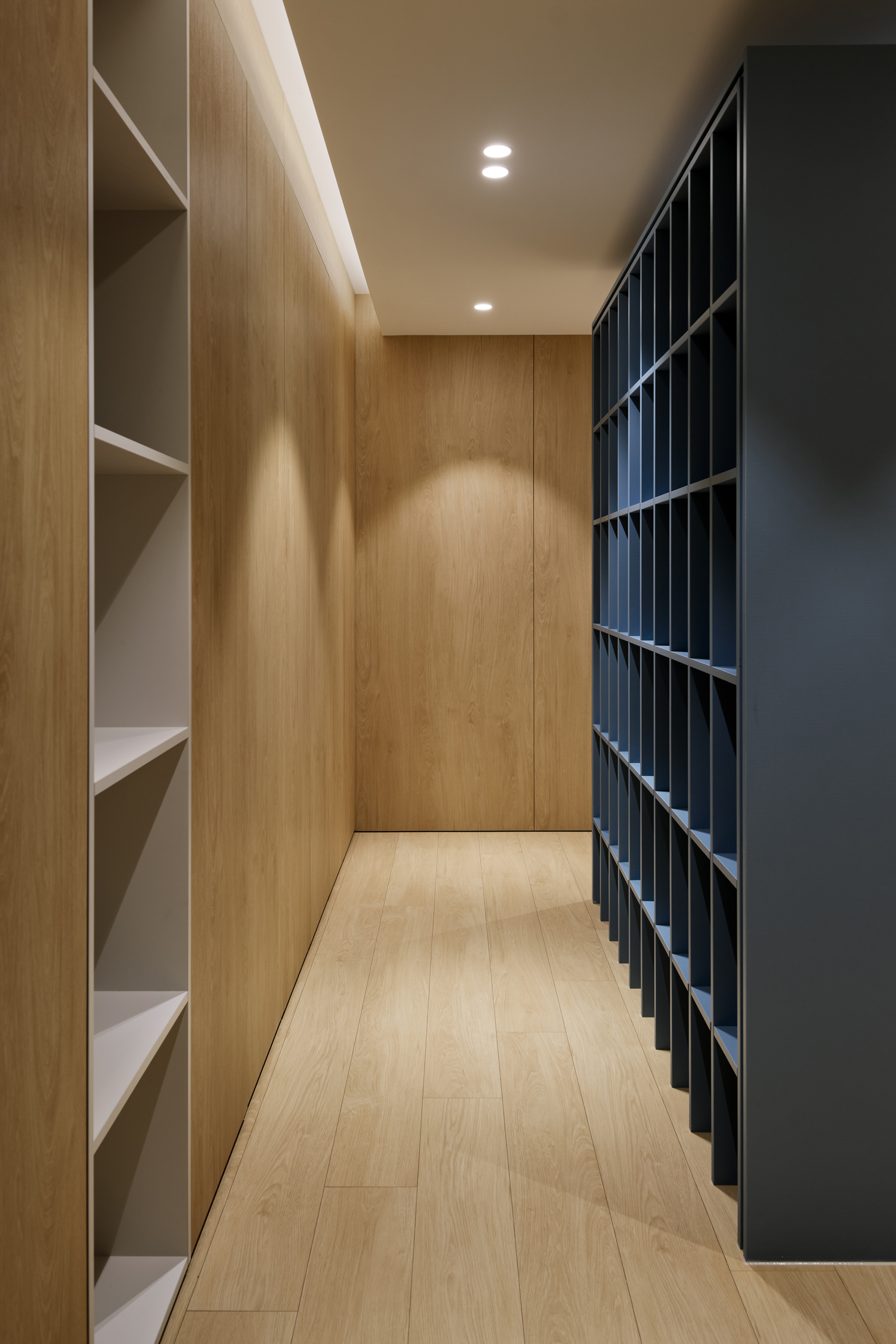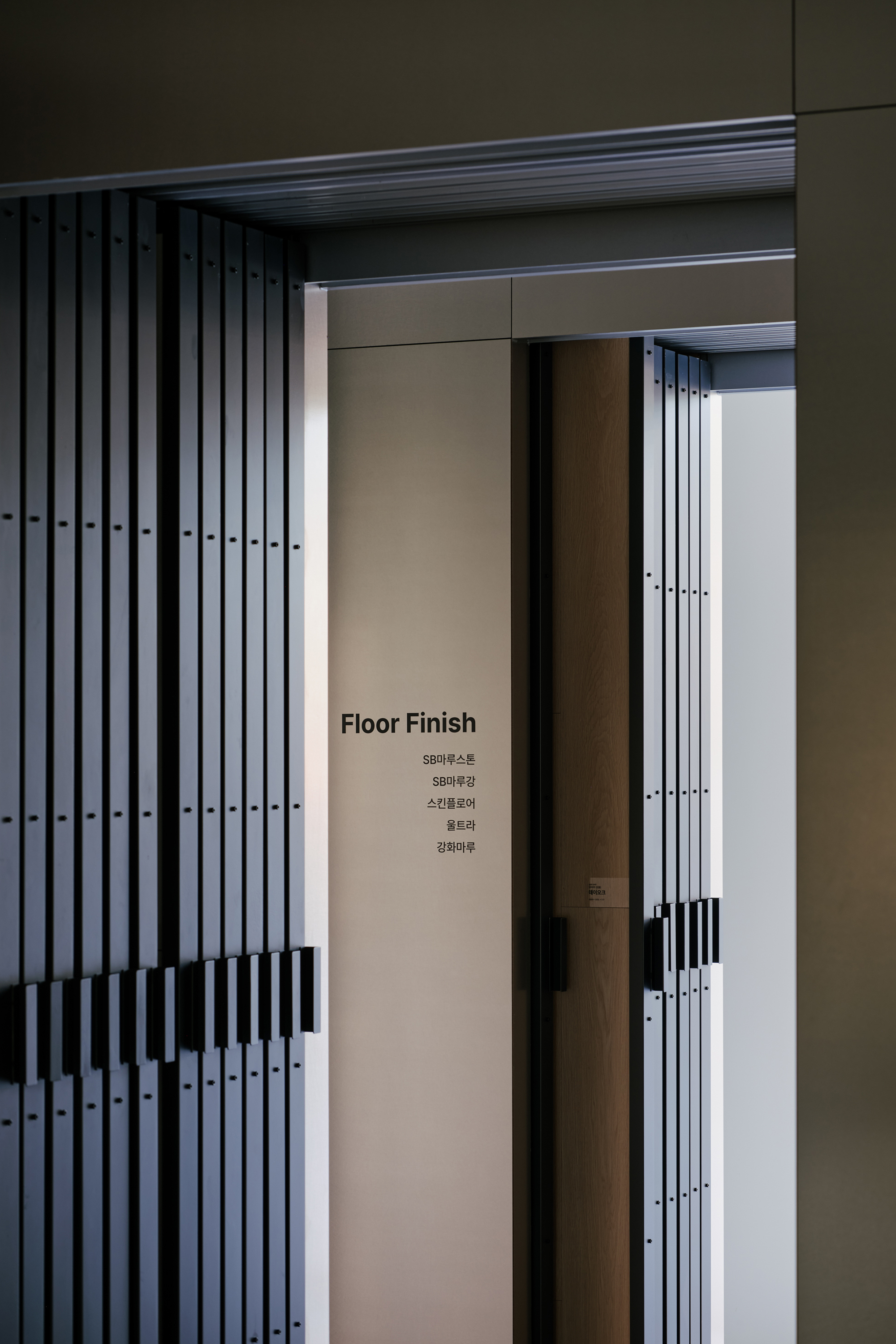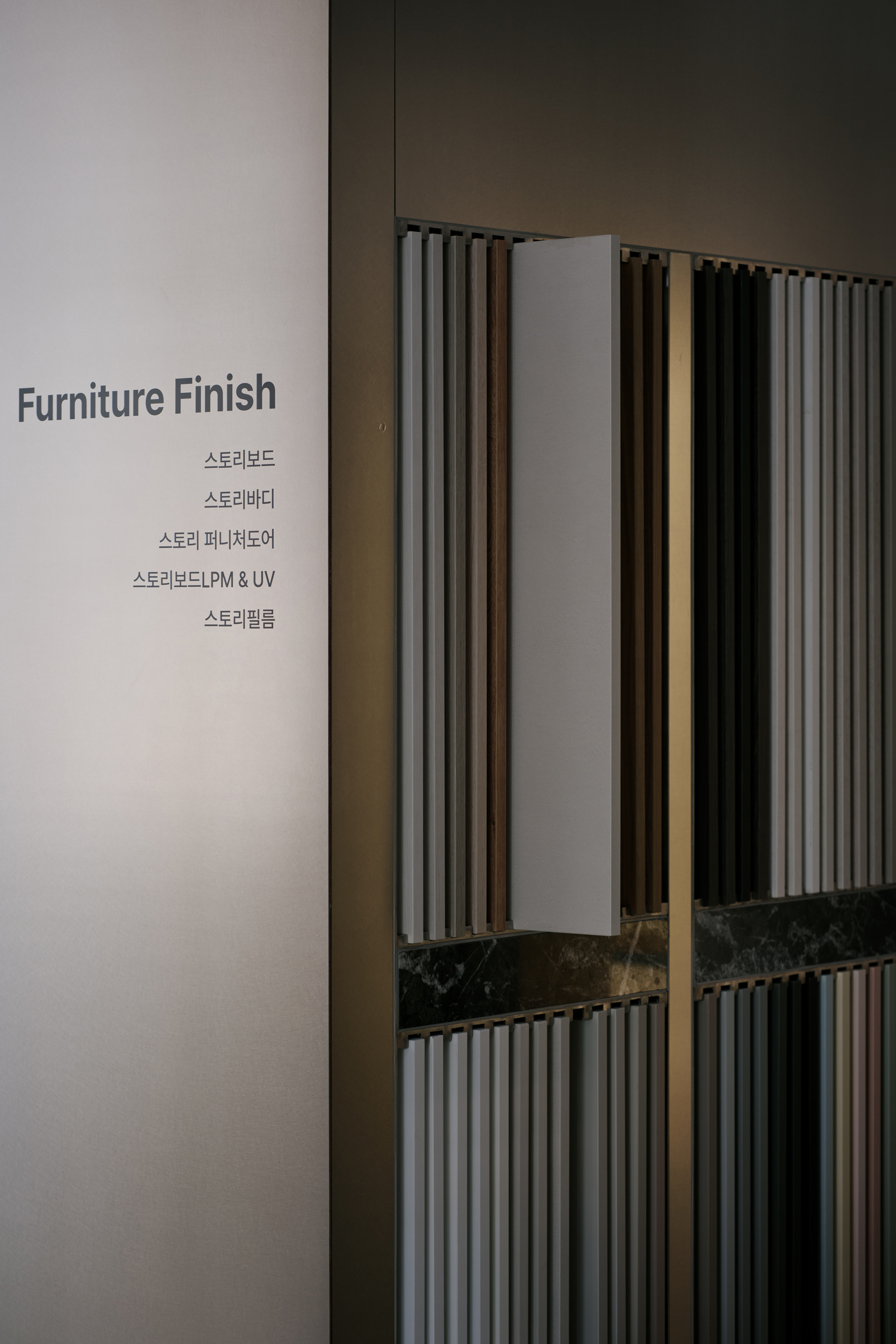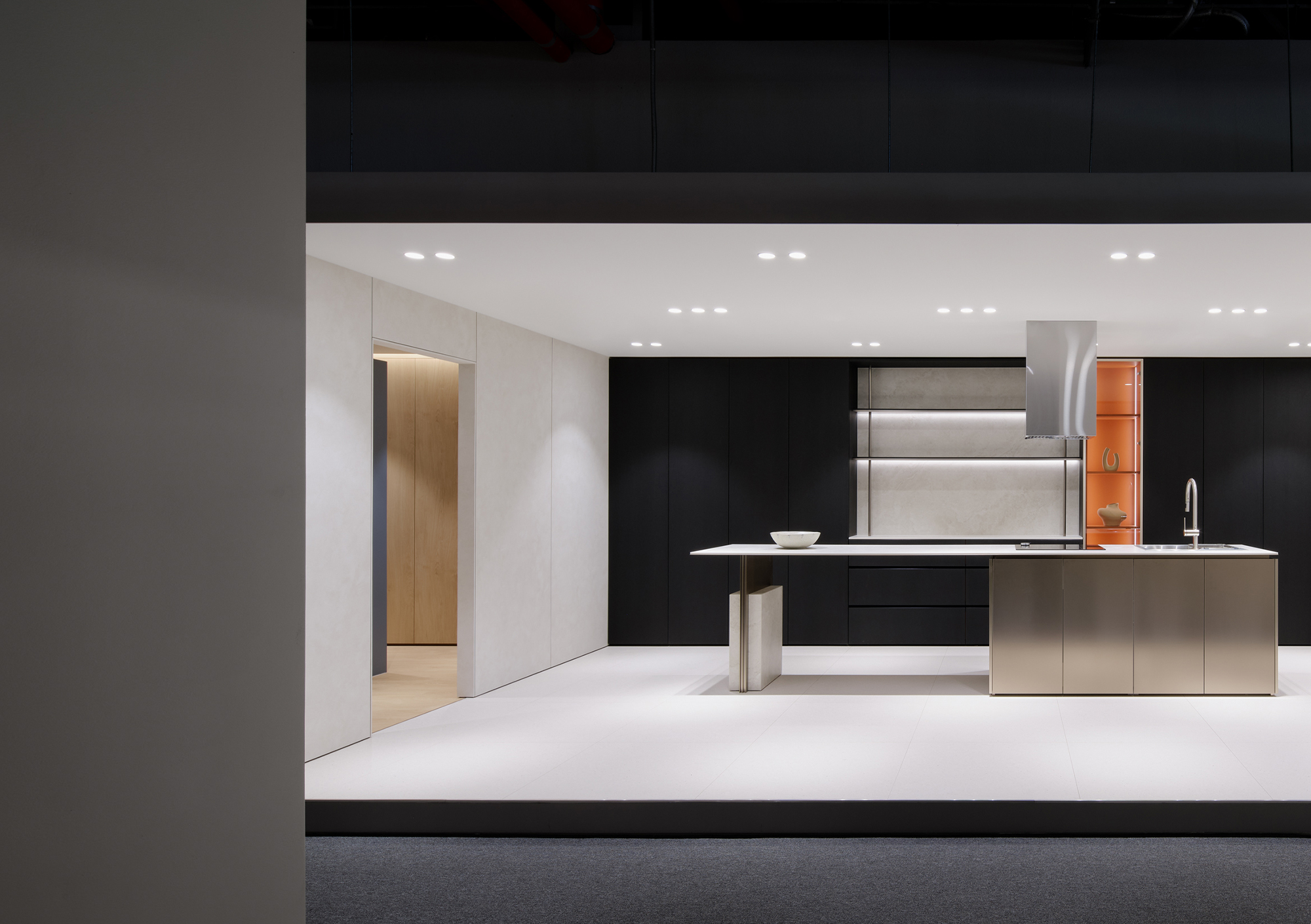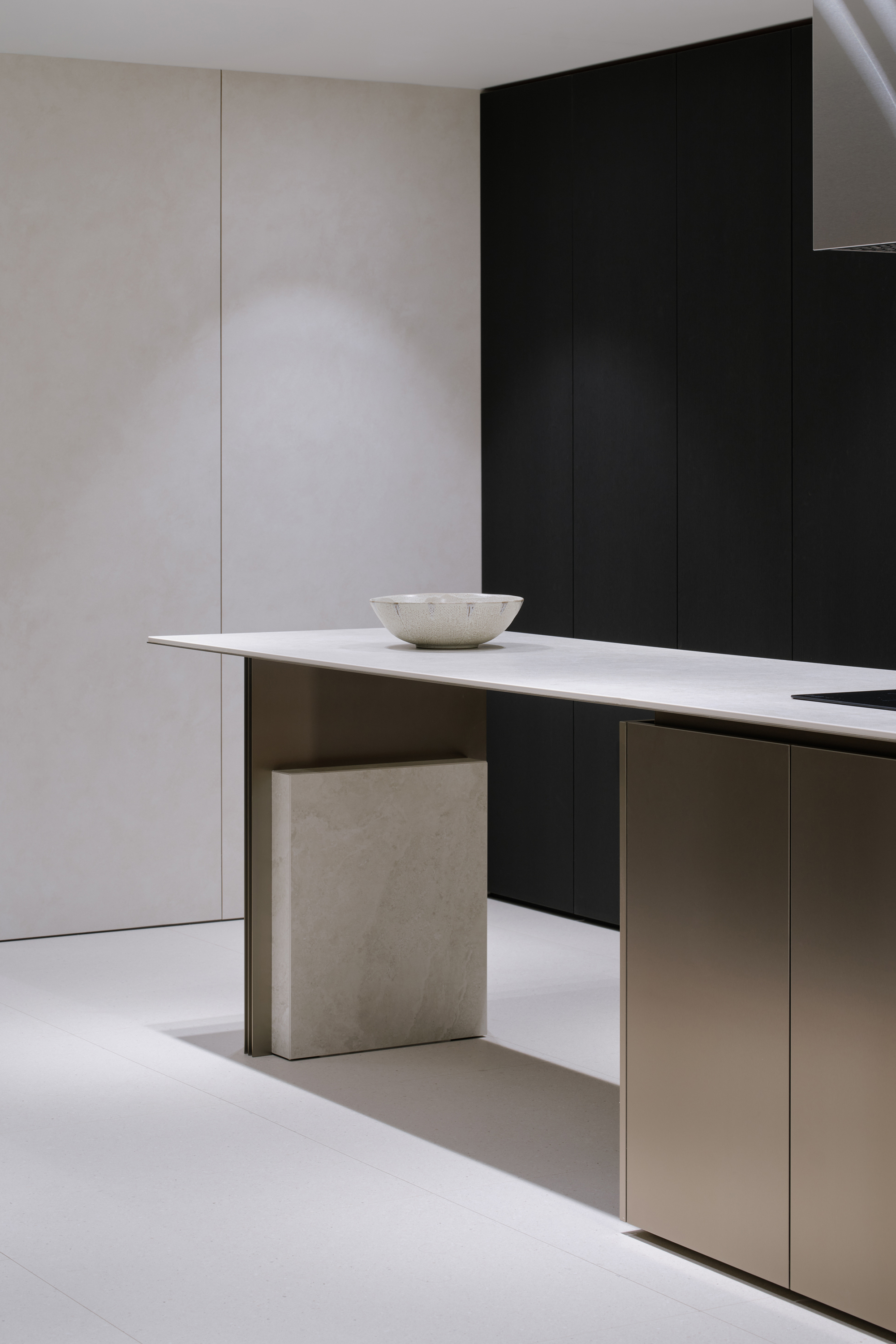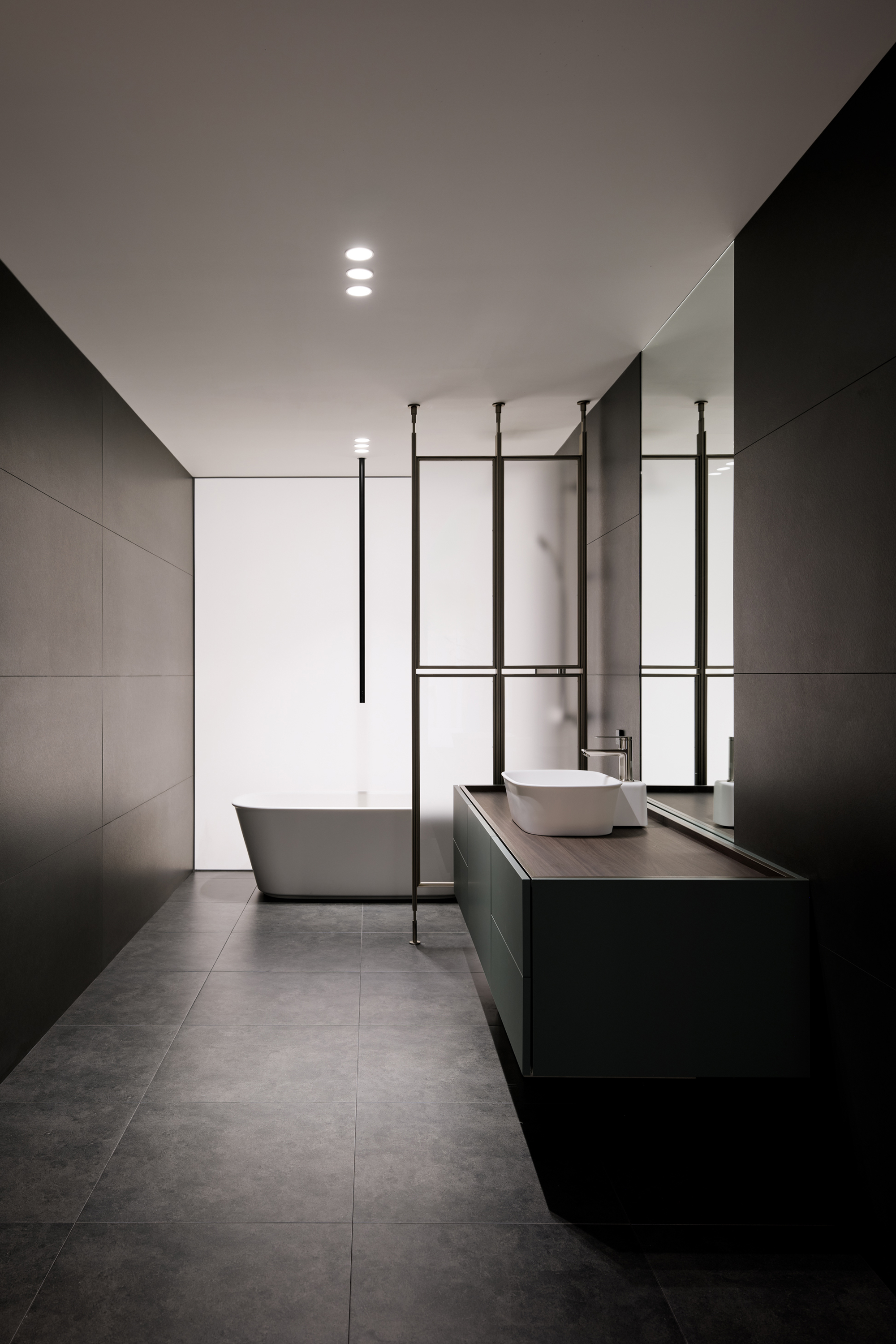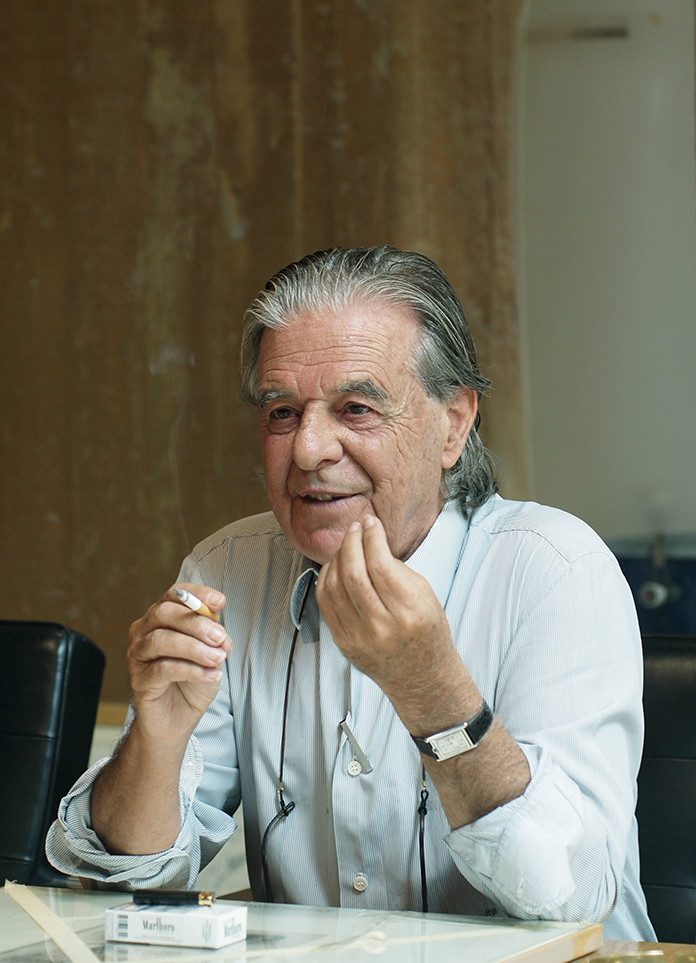BY SEOG BE SEOG is a studio that consistently places the “user” at the heart of its design philosophy. To them, space is not merely about expression—it is a form of service. But this service is not about compliance; rather, it is a response shaped by a distinct perspective, one that reconstructs identity with clarity and intention. As they put it: “In design, the user is everything.”In the Hansol HomeDeco showroom, the team employed a gallery-like spatial logic, guiding users through both the “Special Space” and the “Permanent Space,” where one not only experiences materials but also encounters the ethos of the brand.
They pay close attention to the expressive and structural nature of materials. “Materials always have complex functions—they are constructed as a structural language and perceived as a medium of expression.” In this project, the typically hidden cross-sections of Hansol’s panels were deliberately exposed, becoming a central visual element and a bold statement of identity. For BY SEOG BE SEOG, all design begins with a “point of view”—a posture of observation that is both subjective and objective, refined through spatial nuance. When asked to define the studio in one phrase, their answer was simple and unapologetic: “Just BY SEOG BE SEOG.” Clear, restrained, and quietly assured.
Established as a company that produces MDF, “Hansol HomeDeco” is a company and brand that has been developing and producing various interior finishing materials such as furniture boards and flooring for 30 years. Considering that “Hansol,” the holding company of “Hansol HomeDeco,” is a company that operates based on the paper industry, the history of “Hansol Home Deco” is much longer.
In creating the first showroom of “Hansol HomeDeco,” the most important issue was “who” the designers would show “Hansol HomeDeco.” Fortunately, both the client and the designers agreed on the idea of “designers working in the space field.” The designers went one step further and narrowed the scope of the target even further, defining it as “designers who pursue creativity and never stop trying.”
